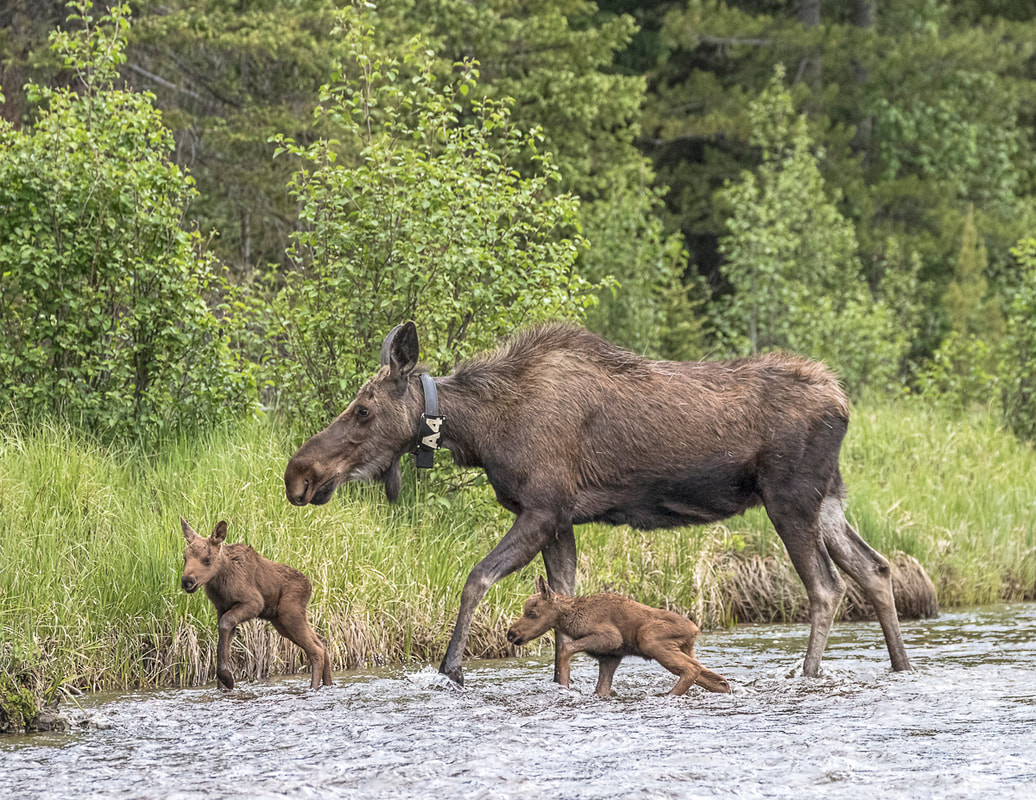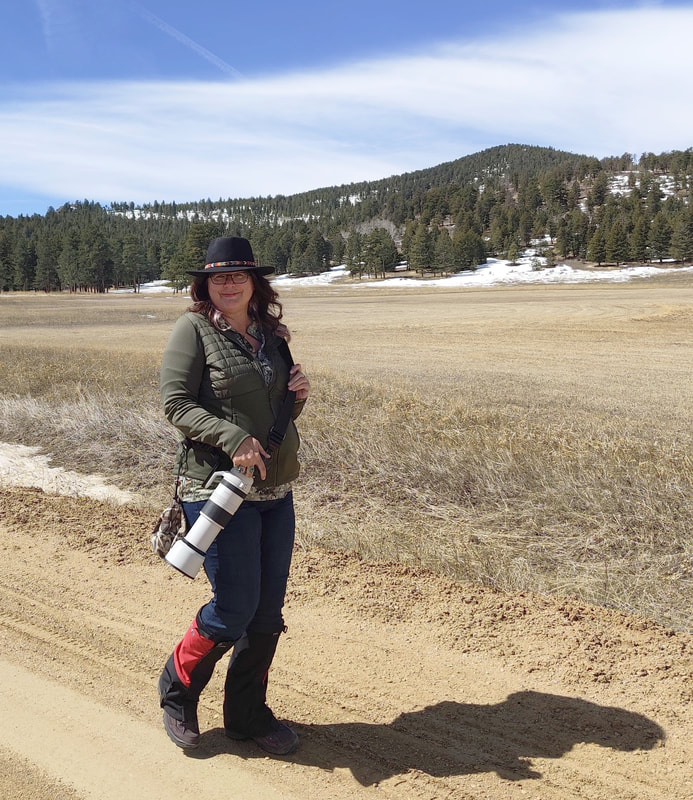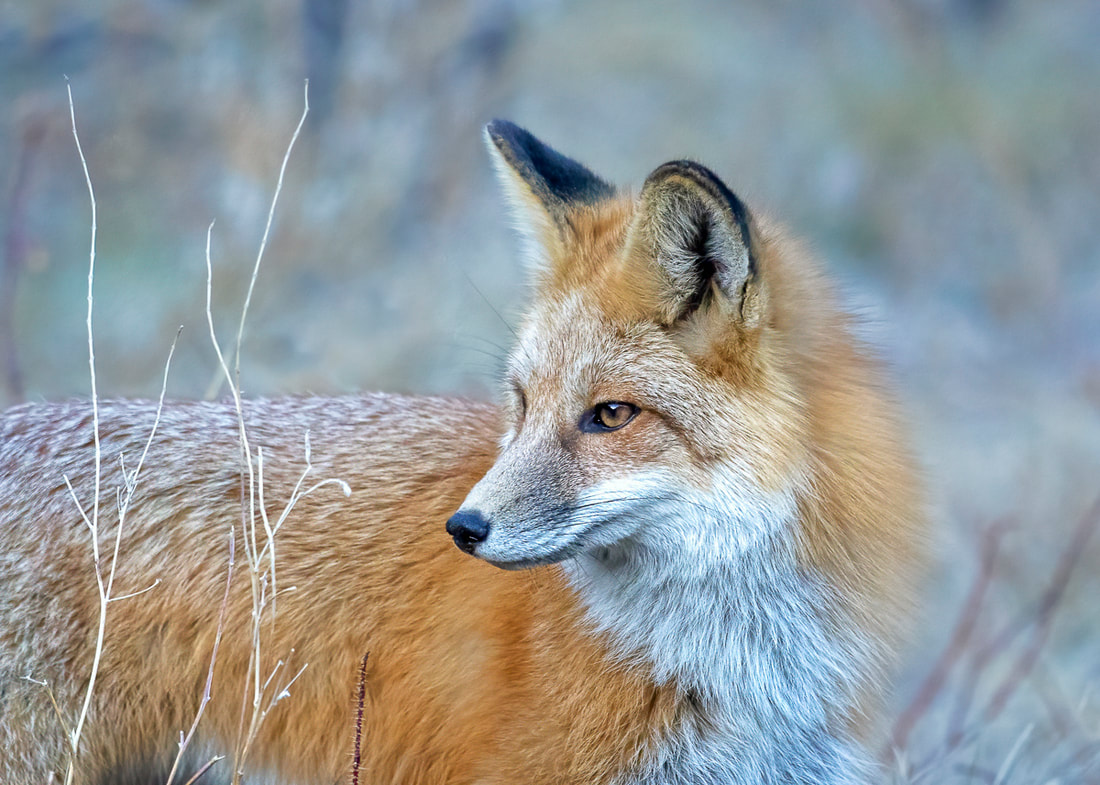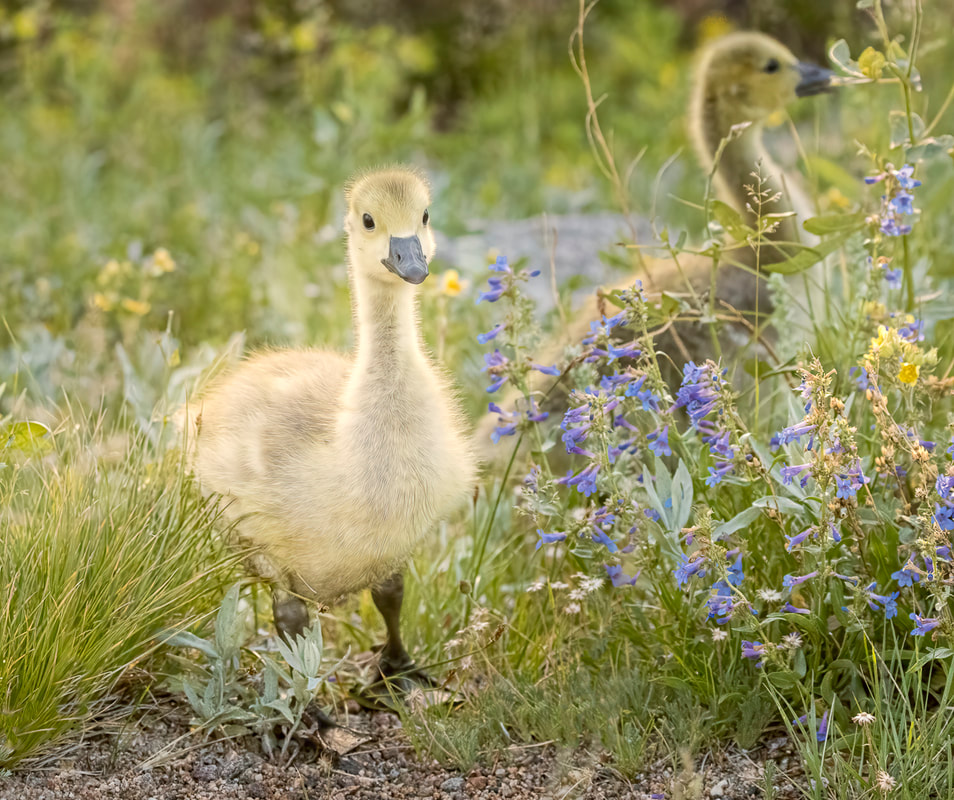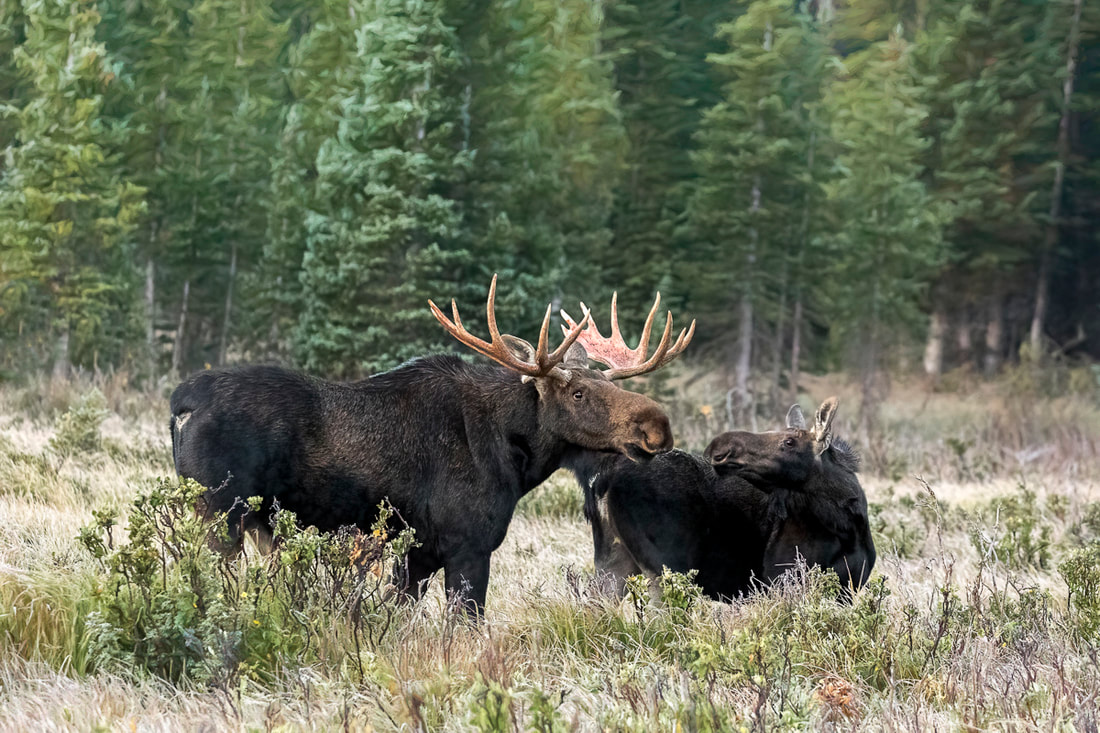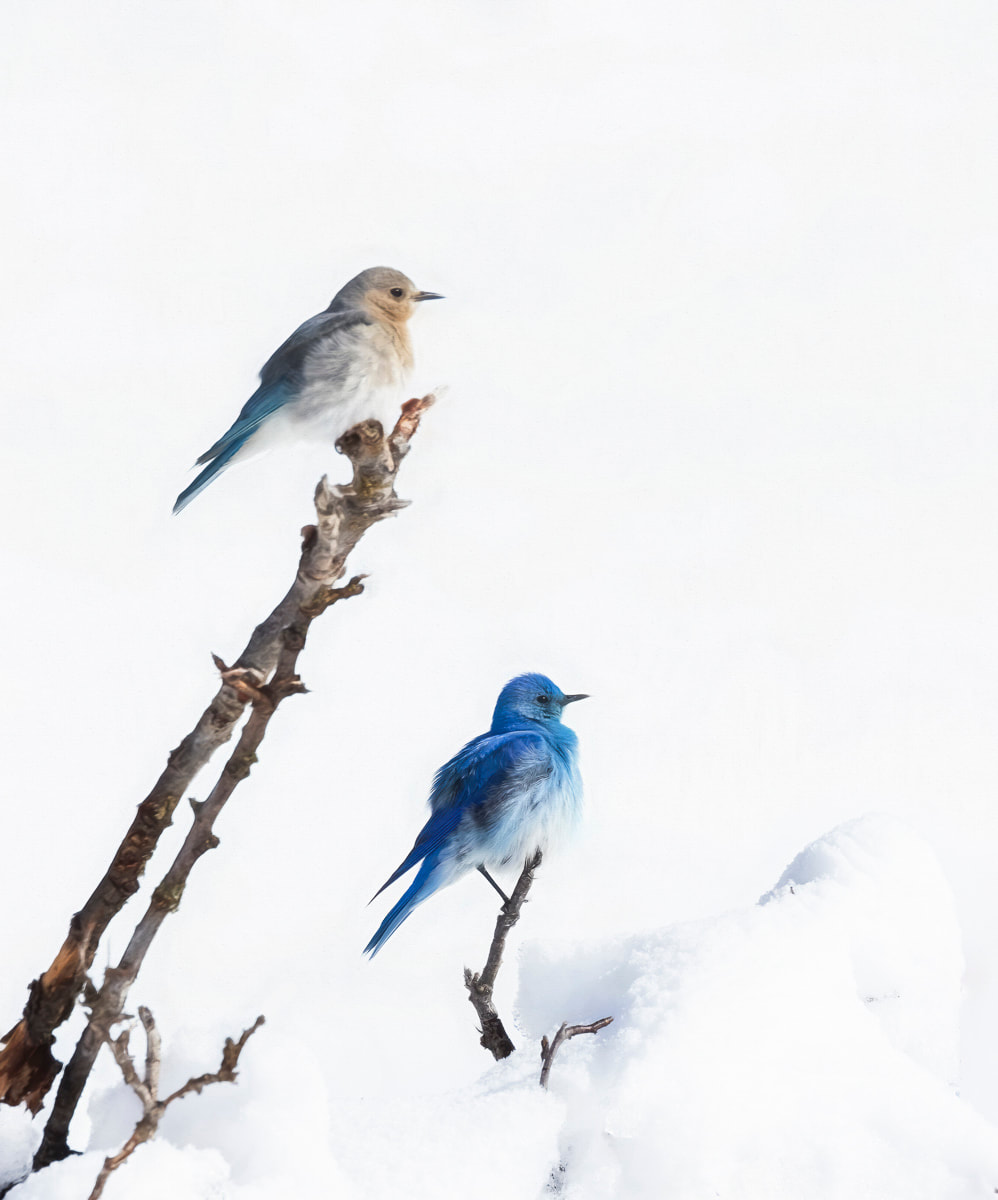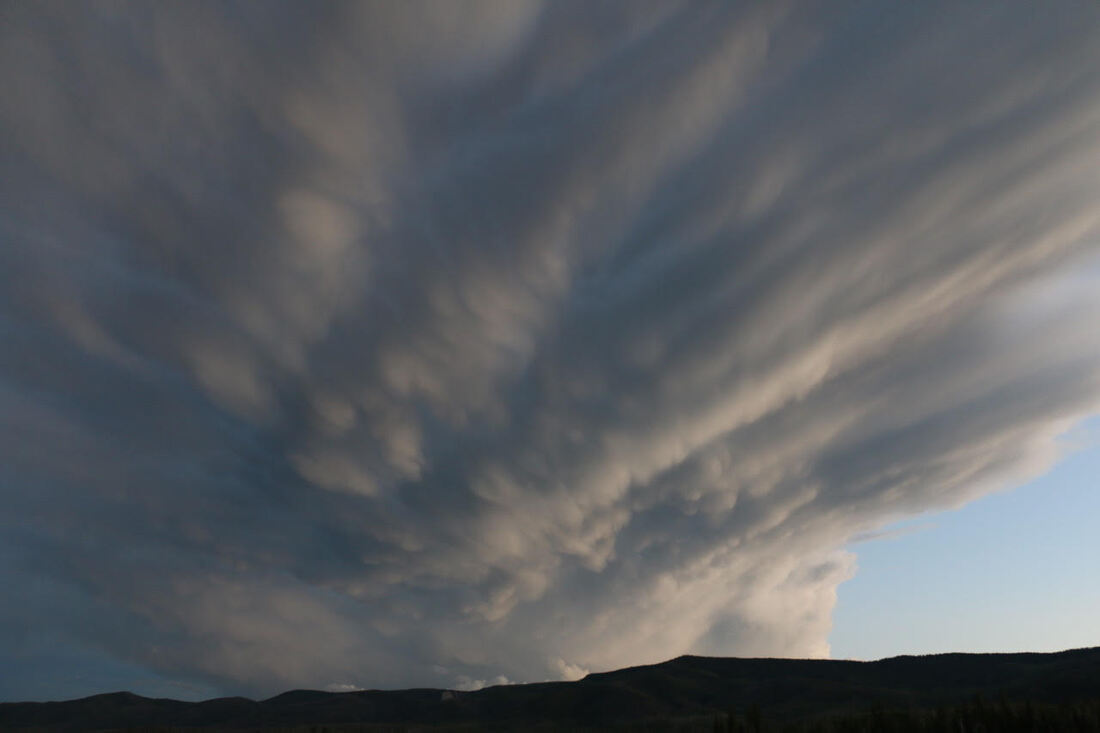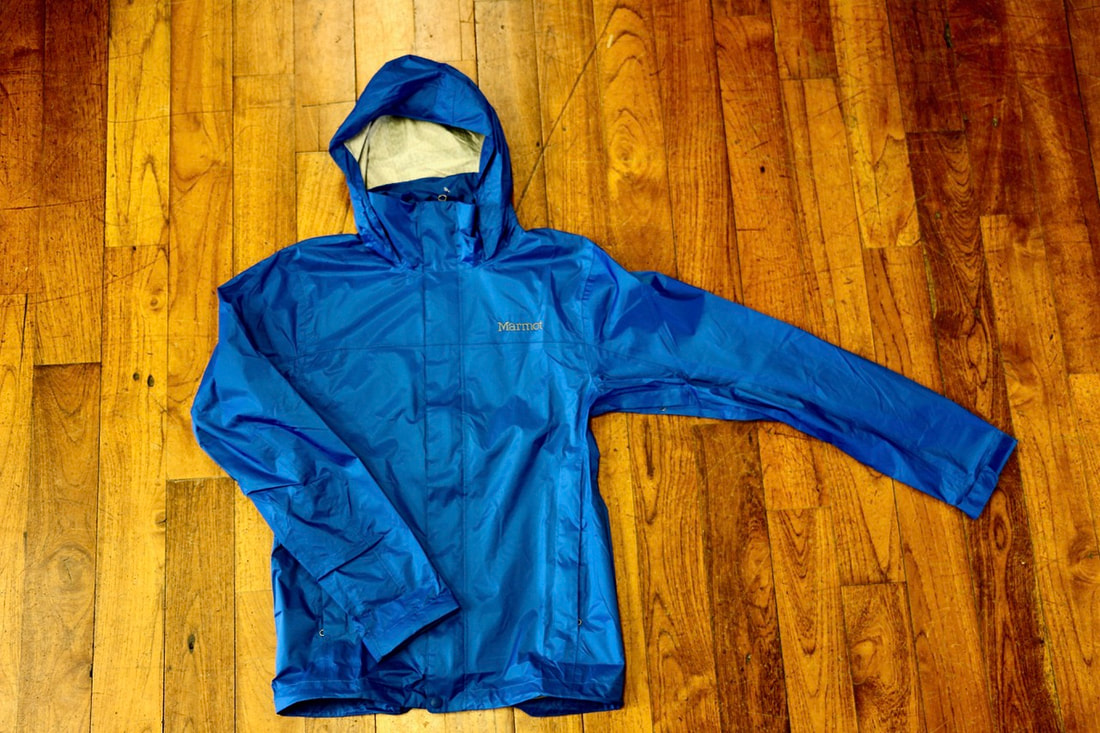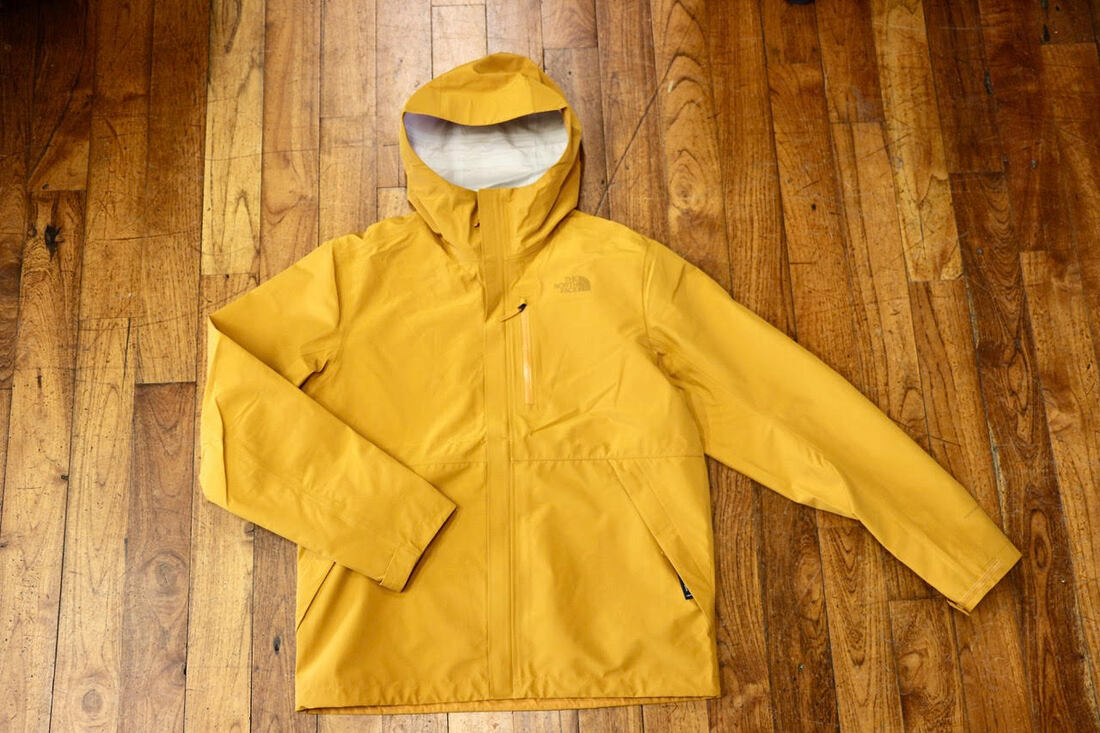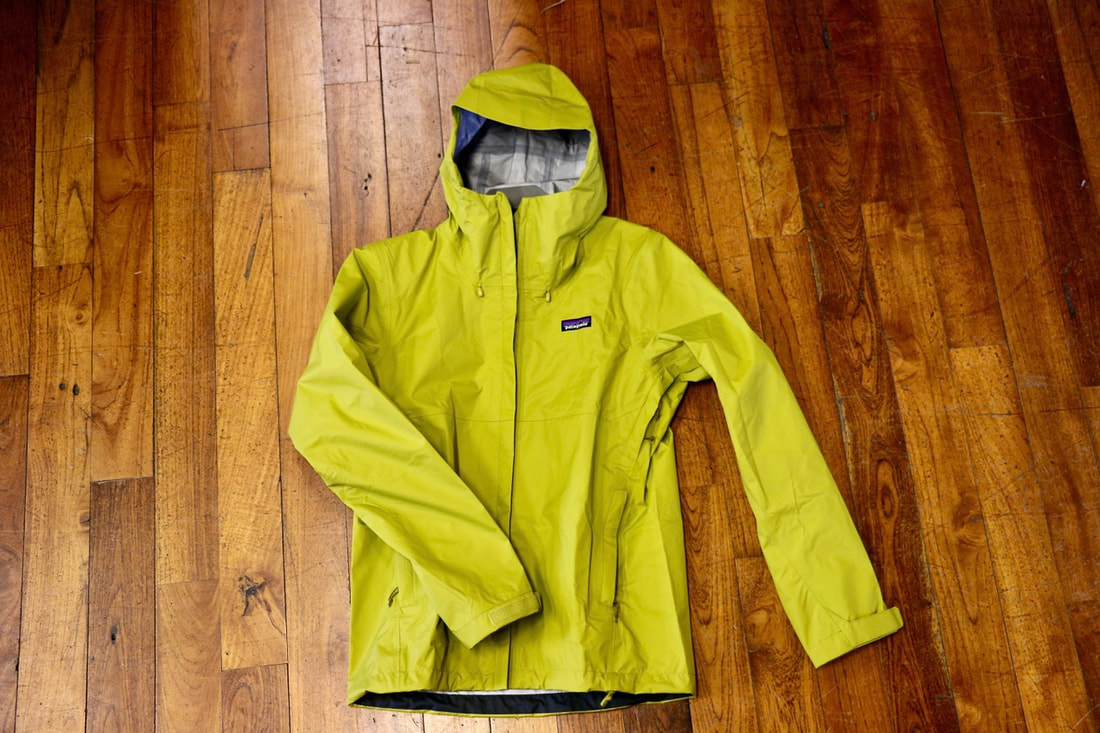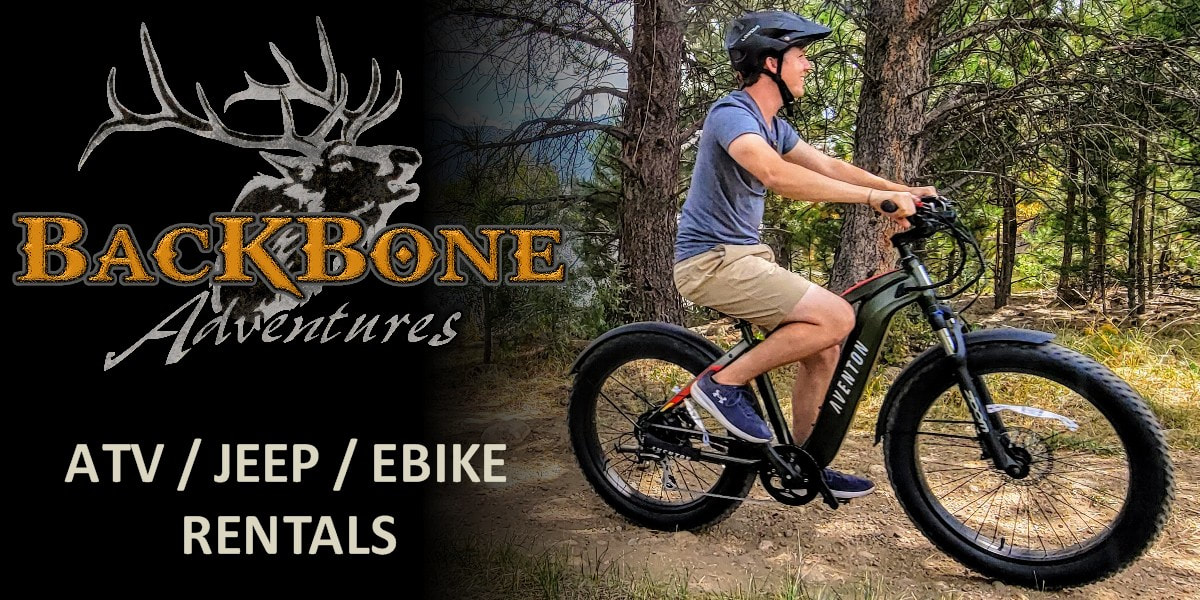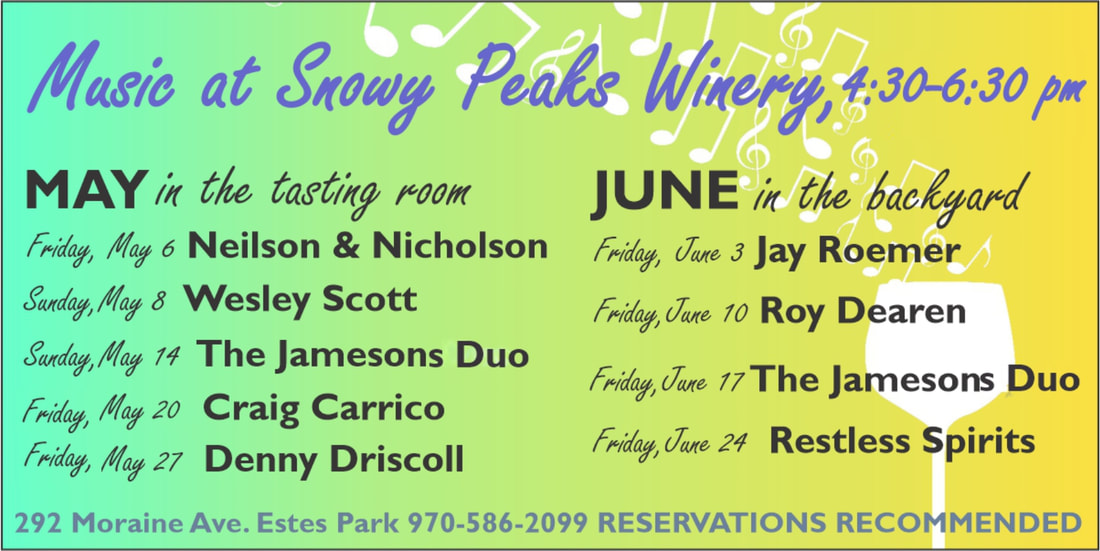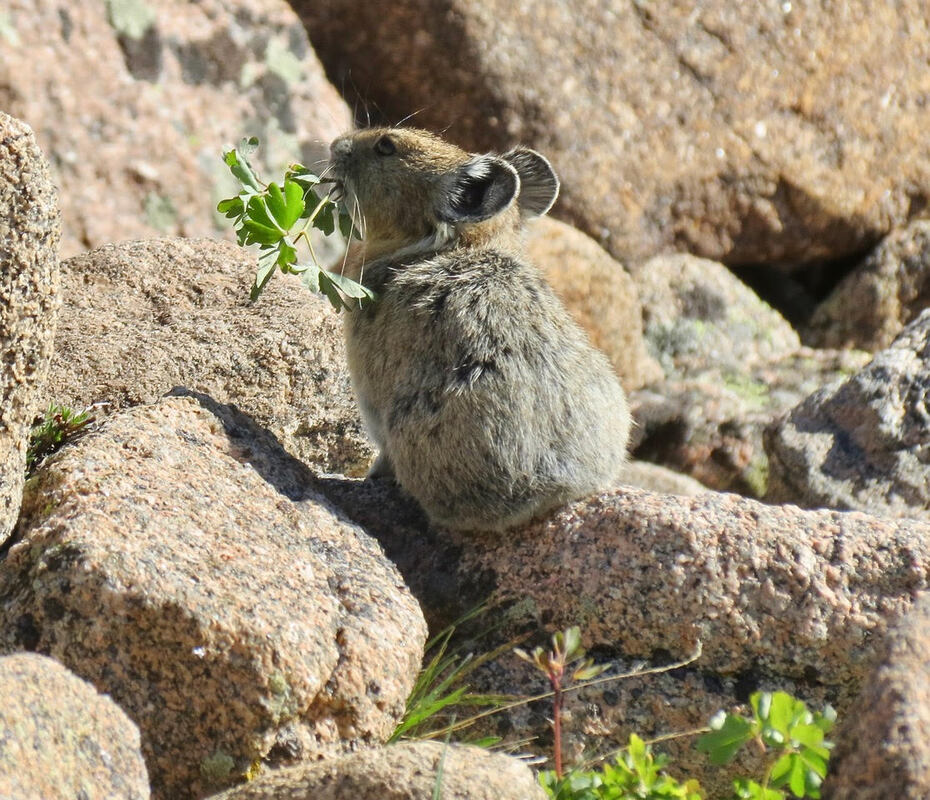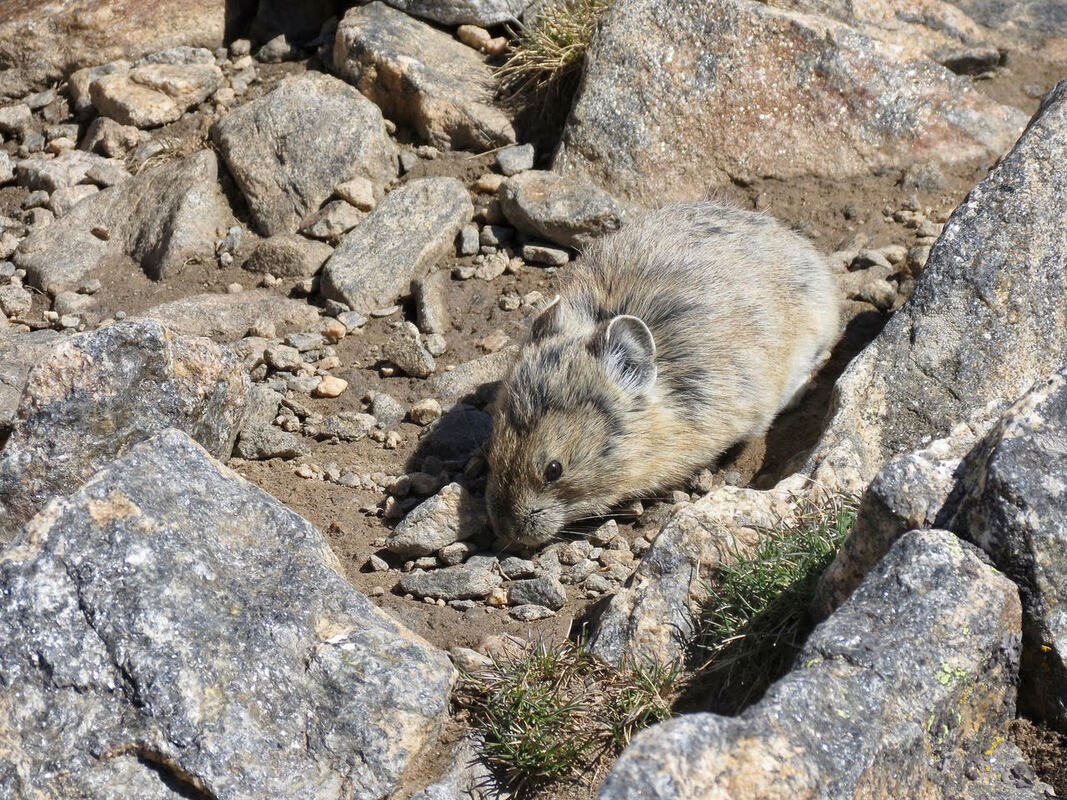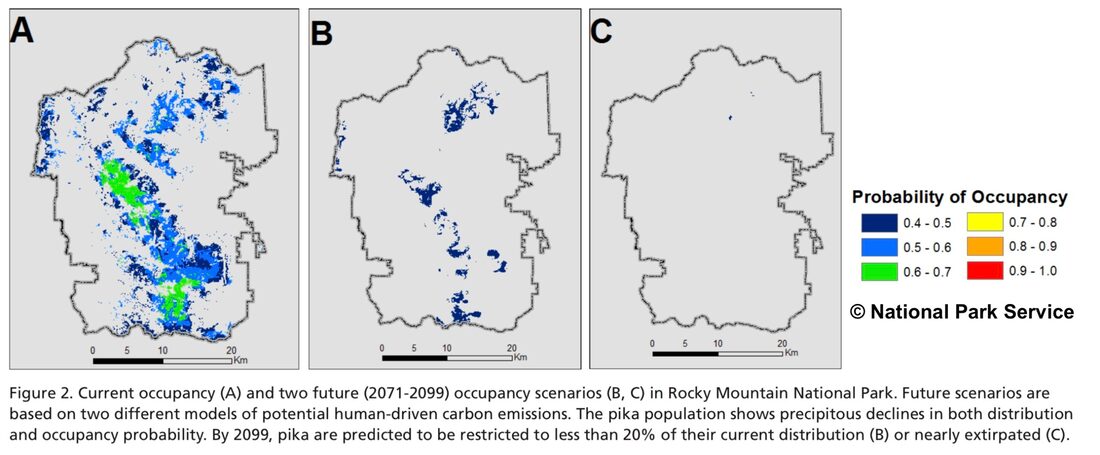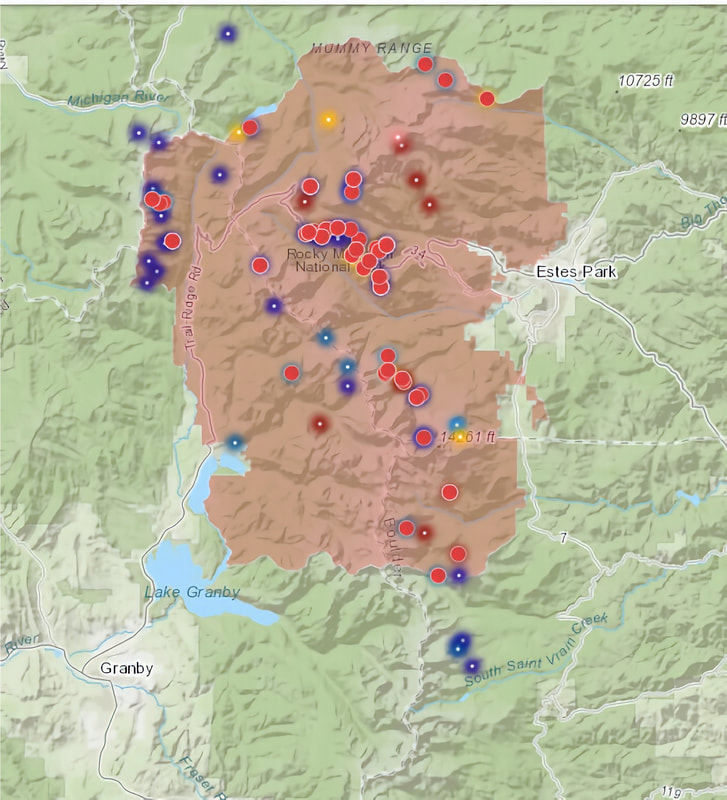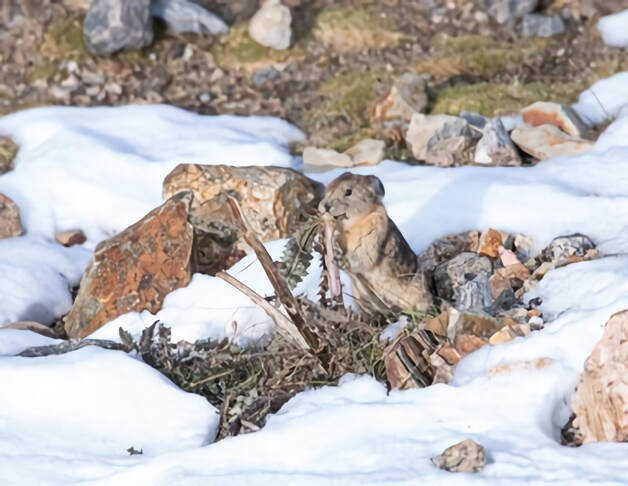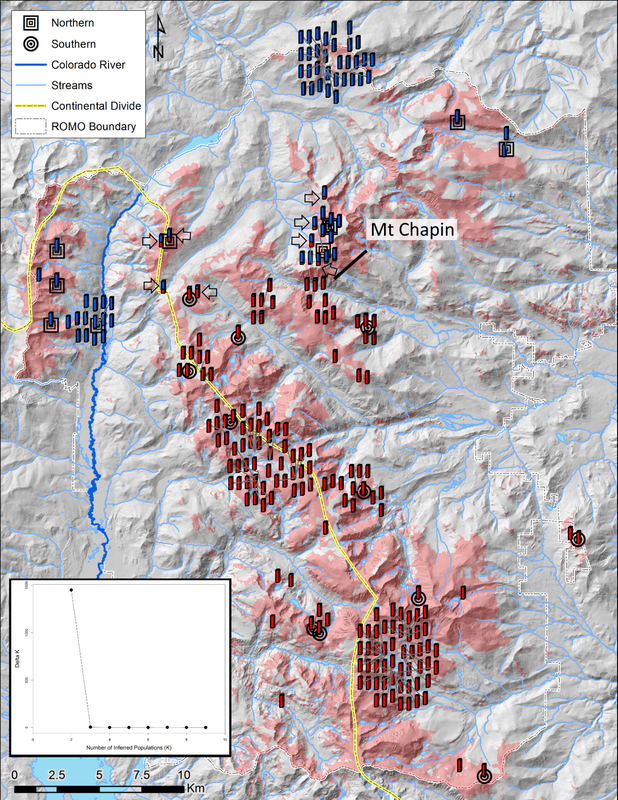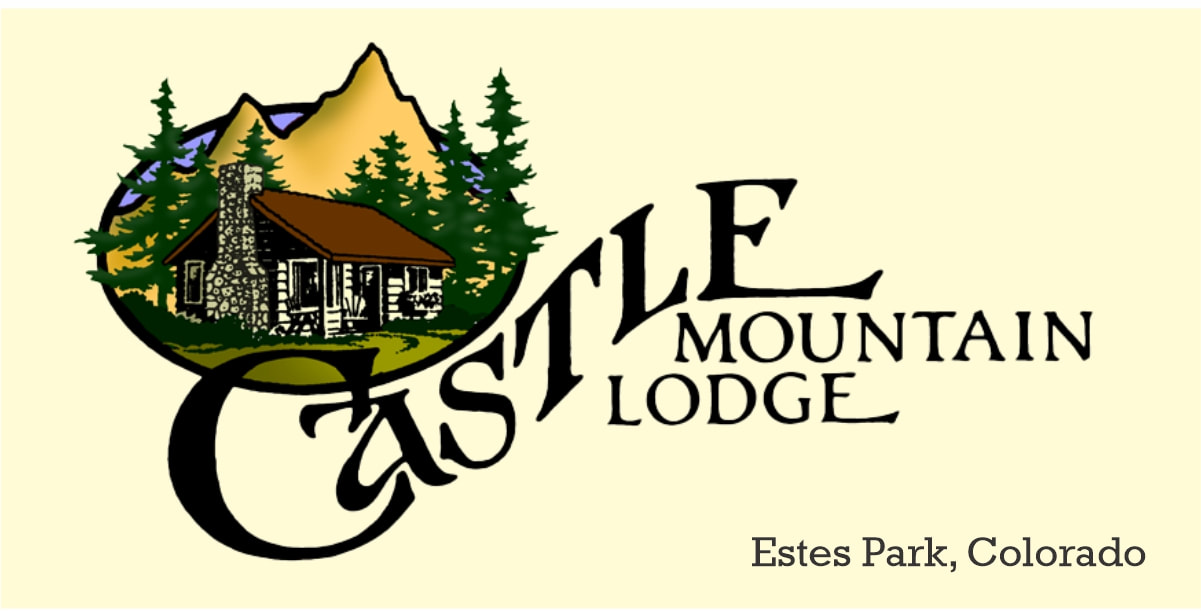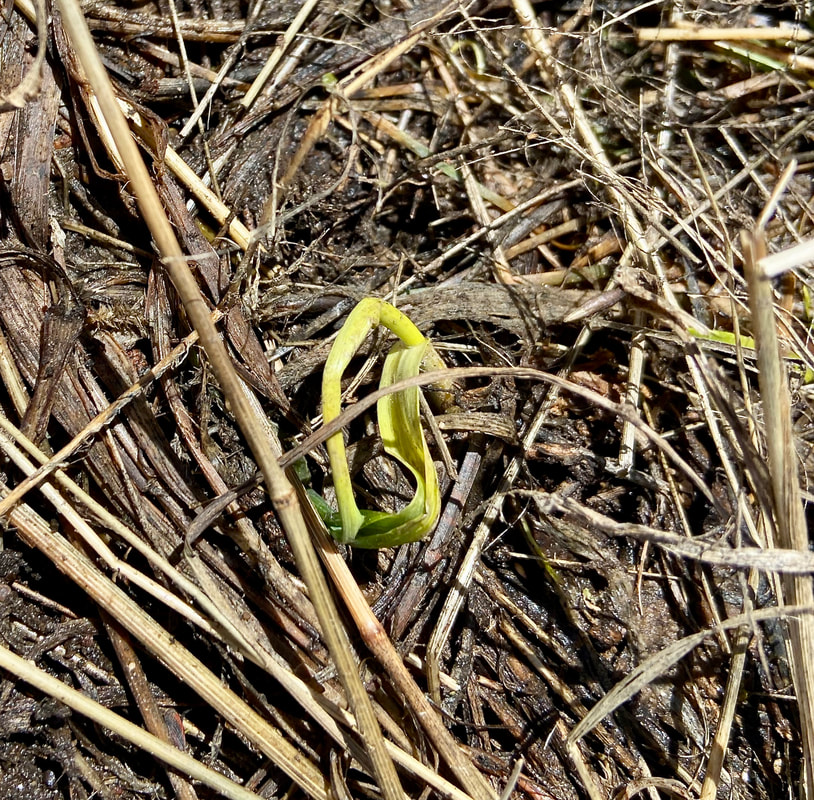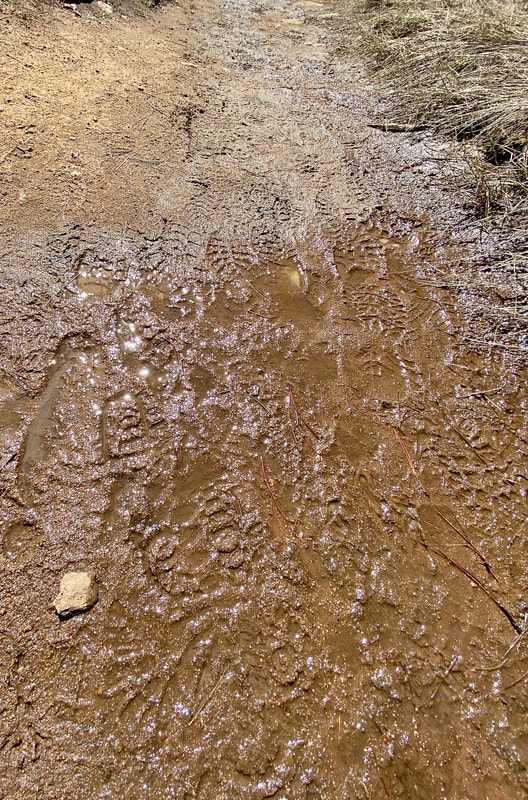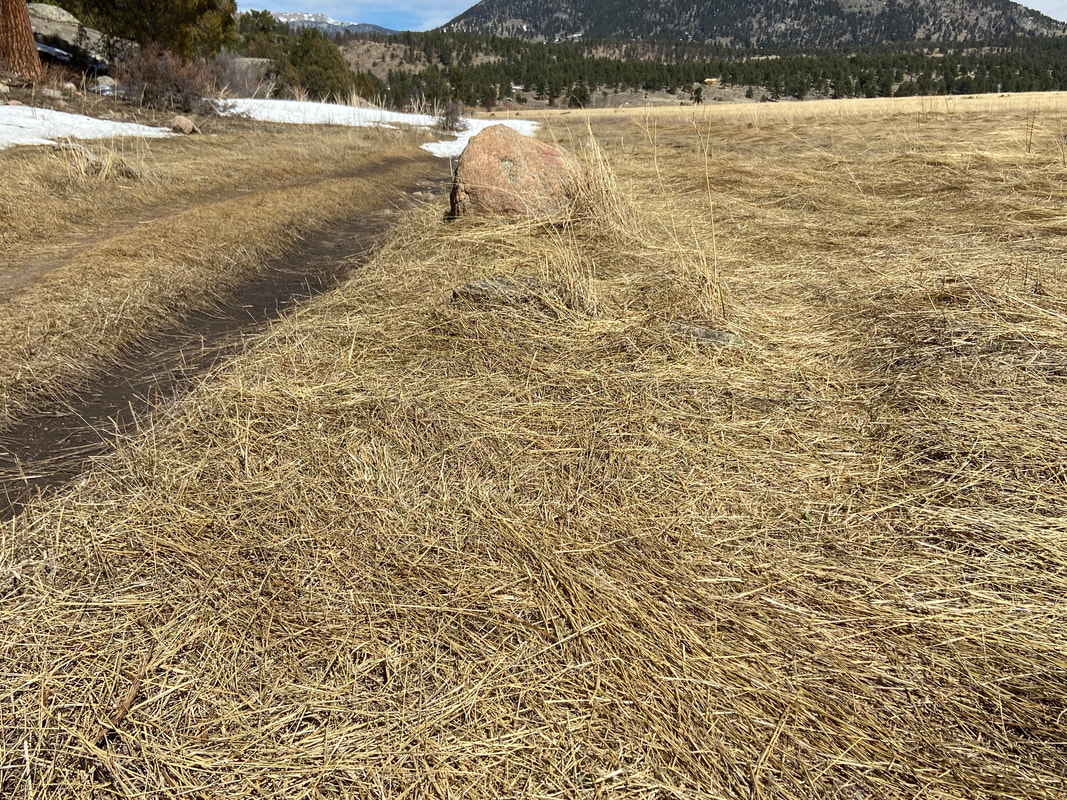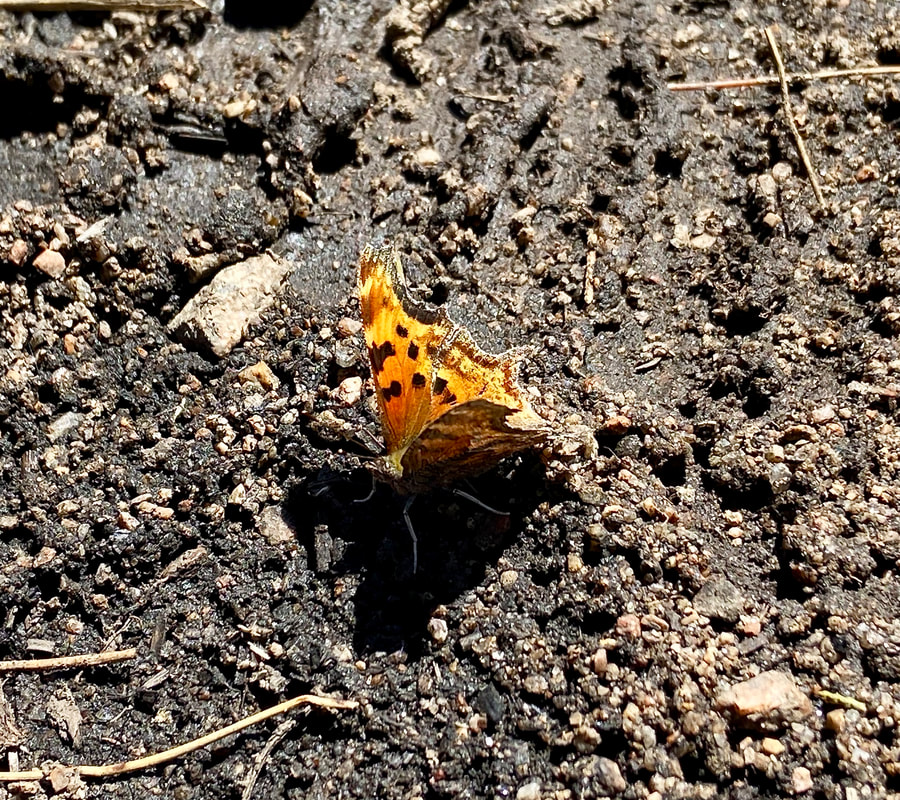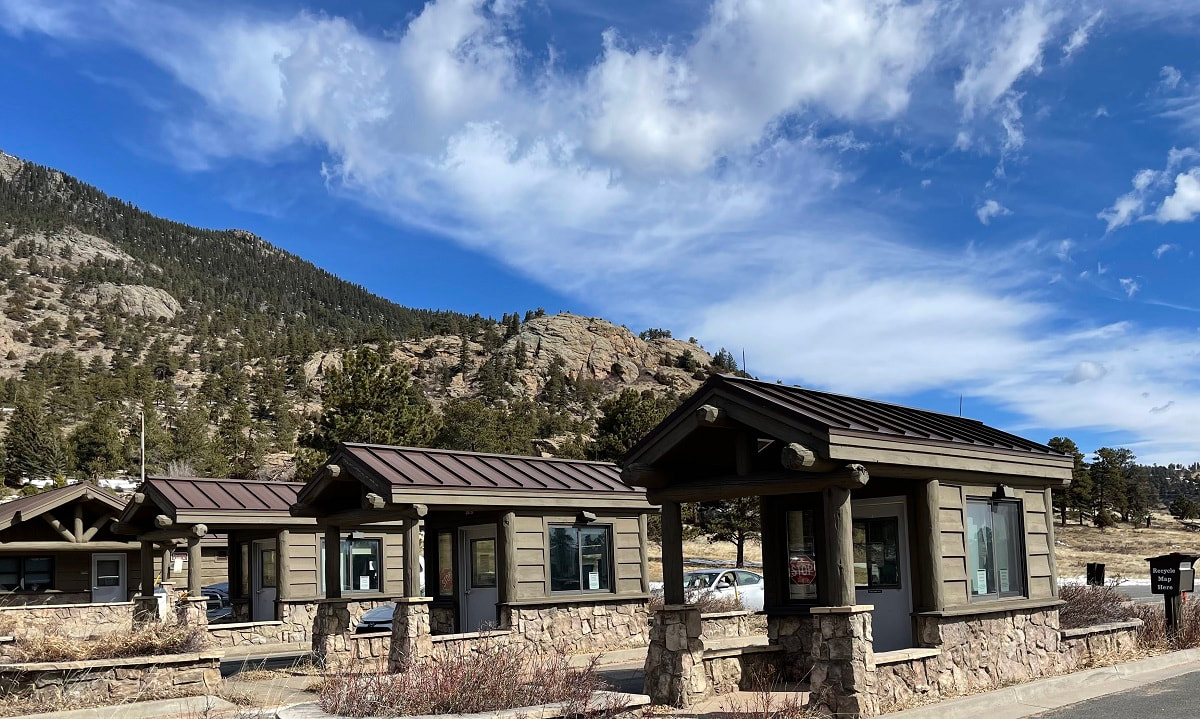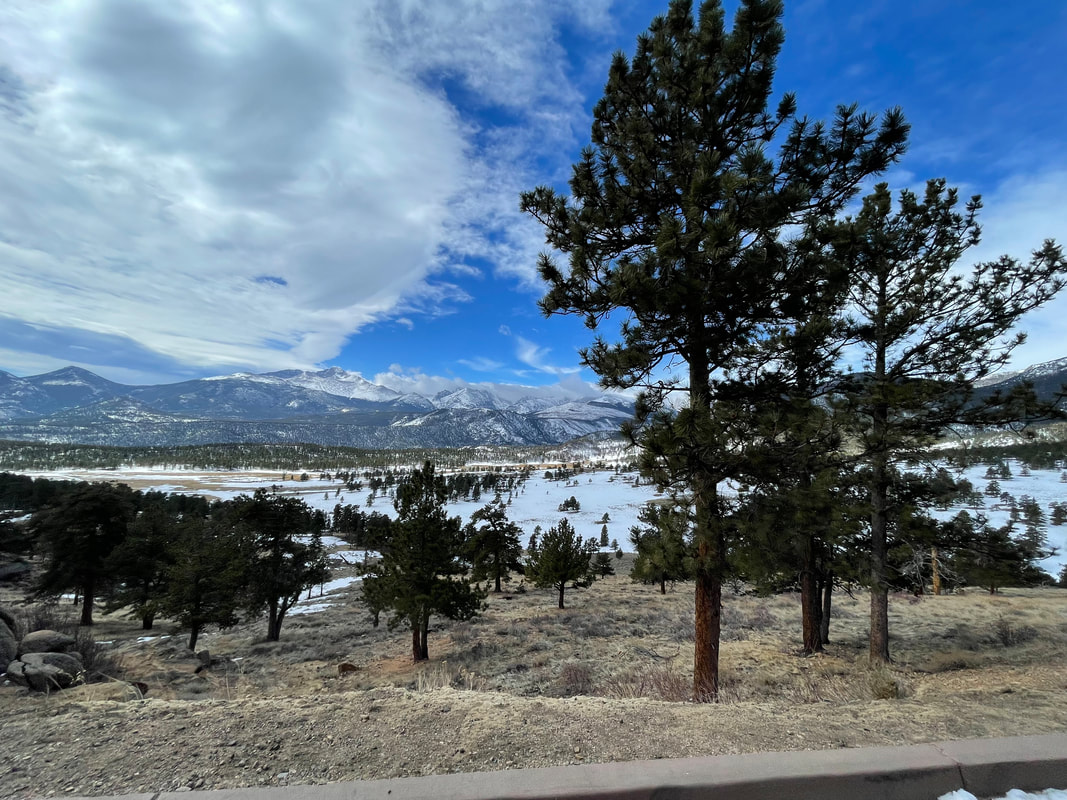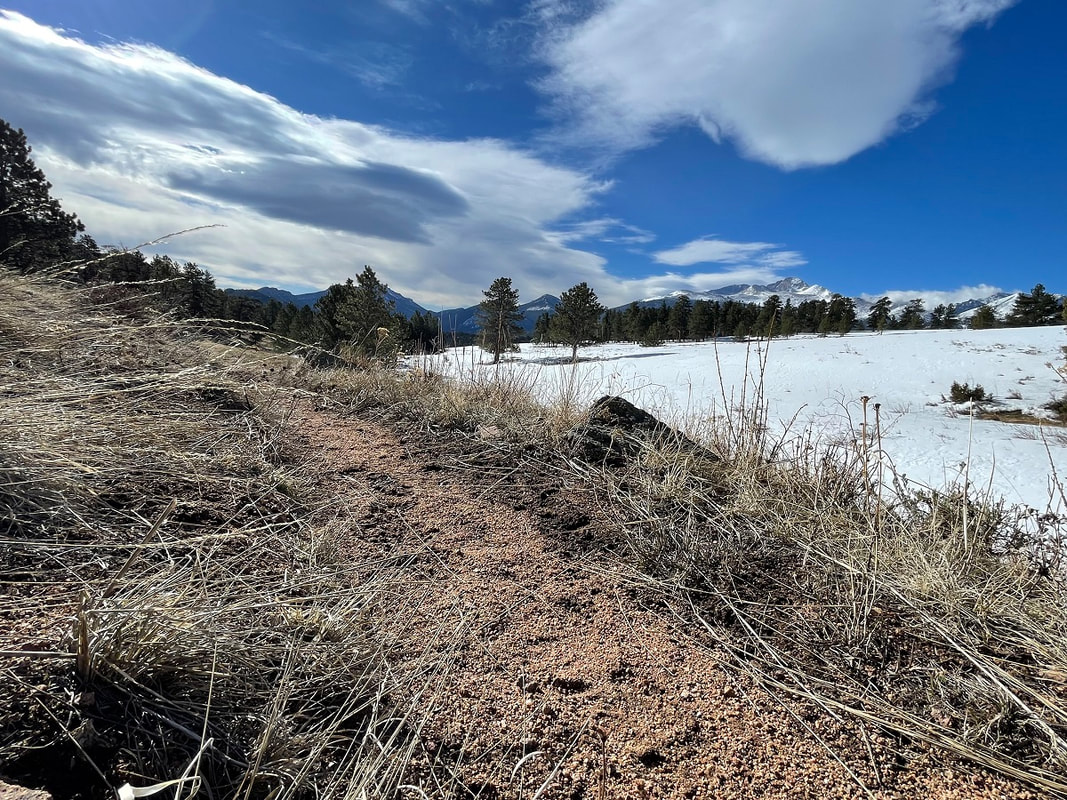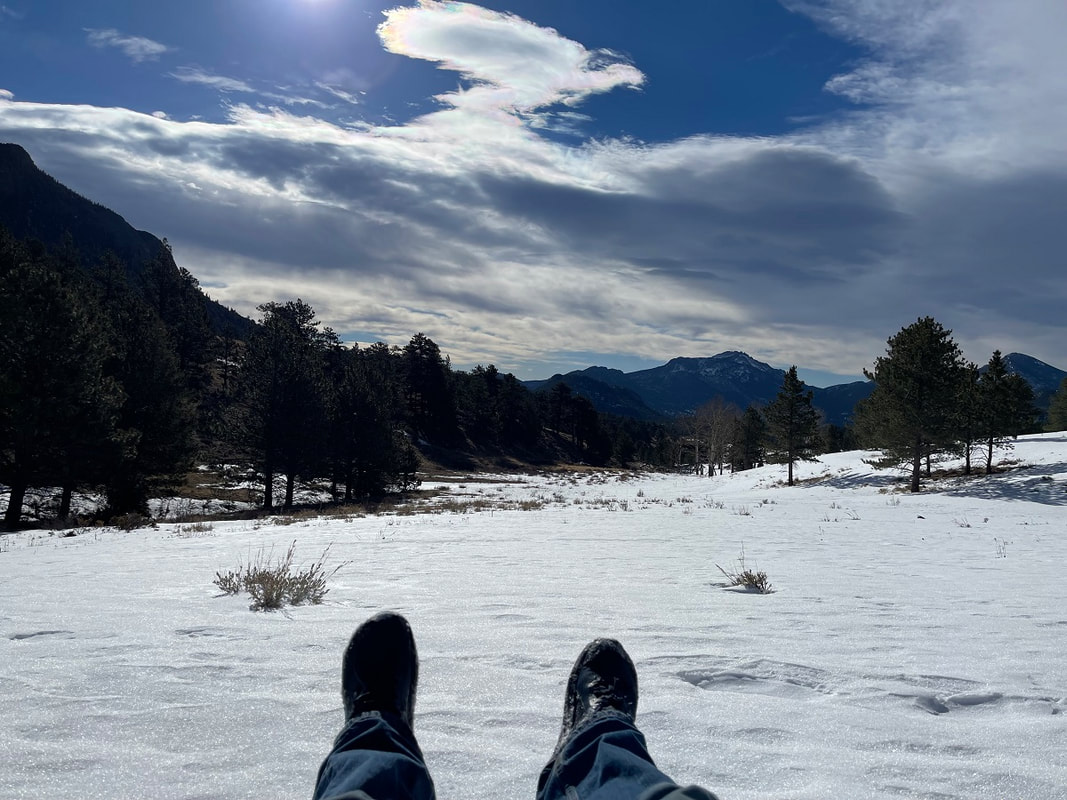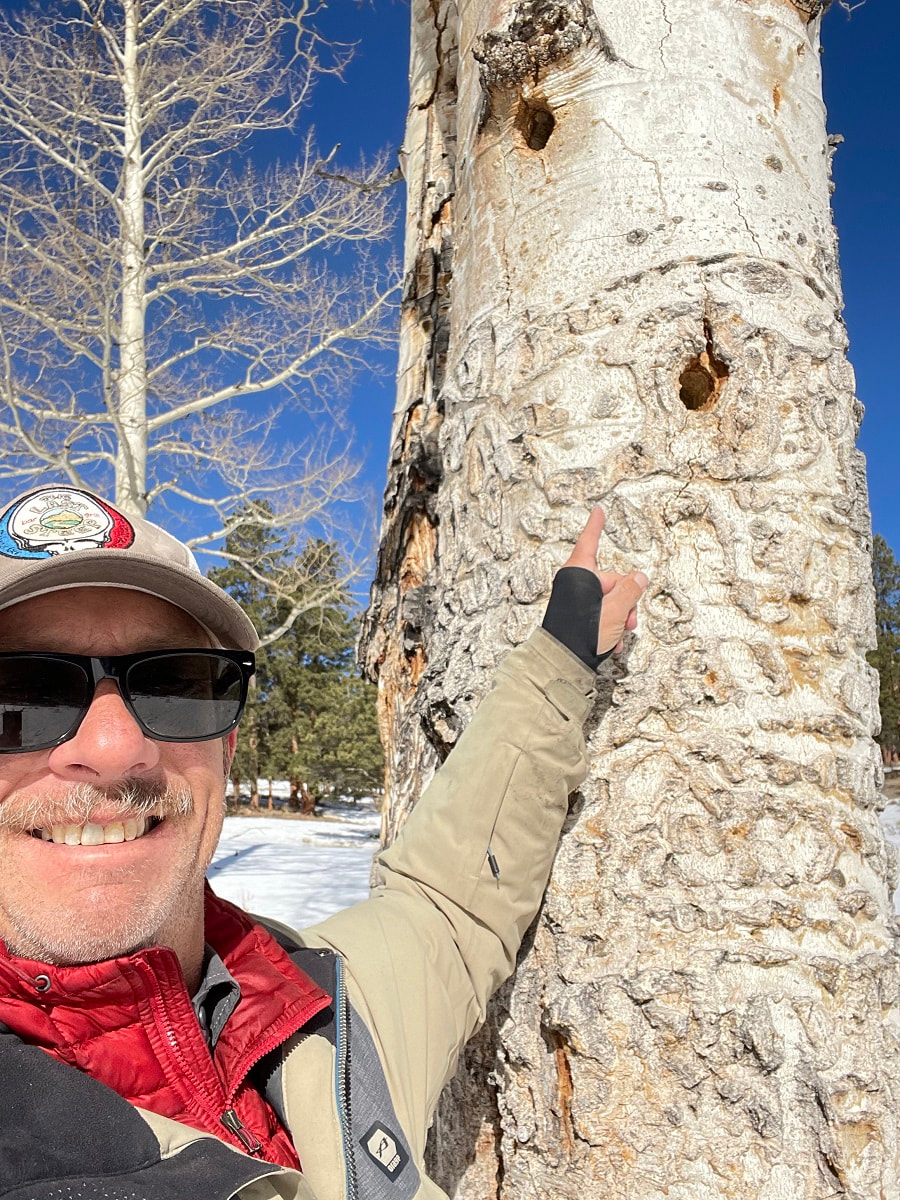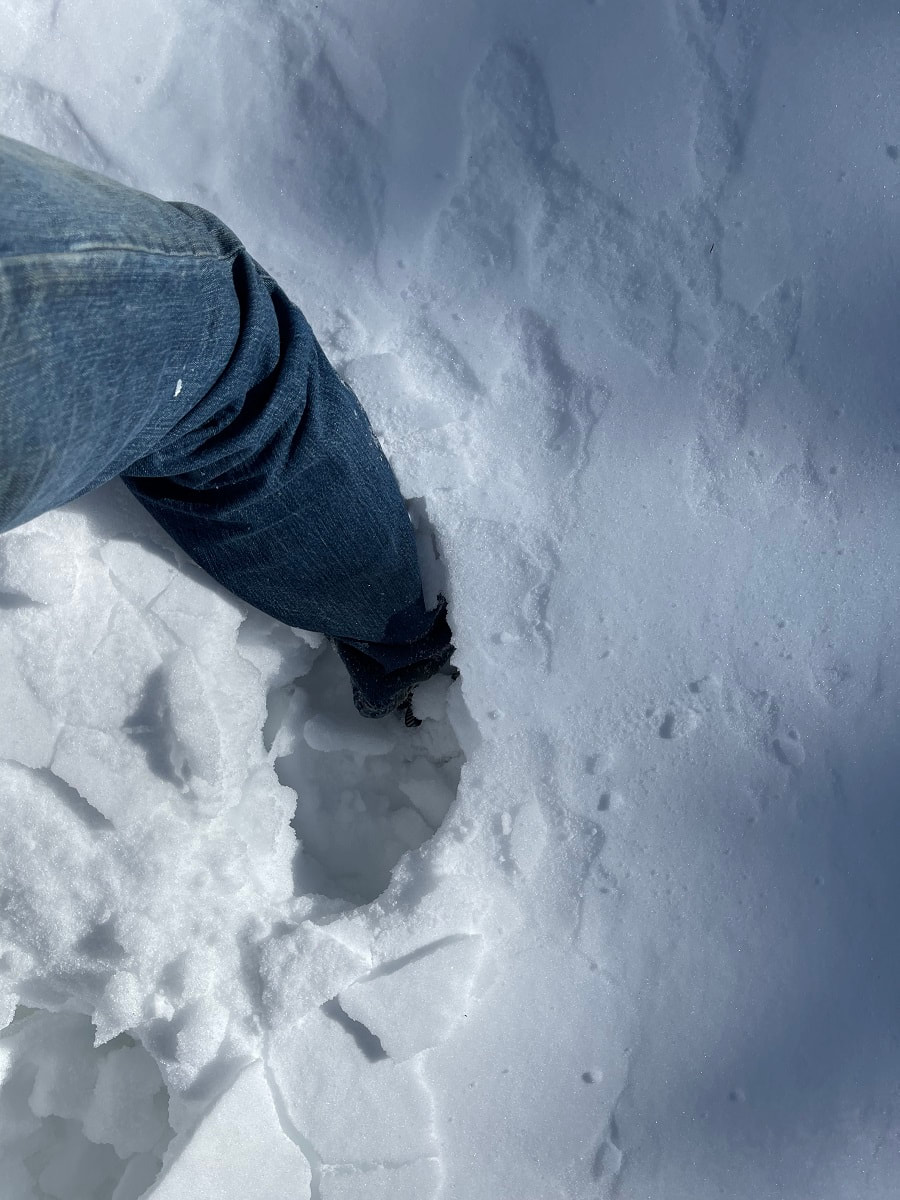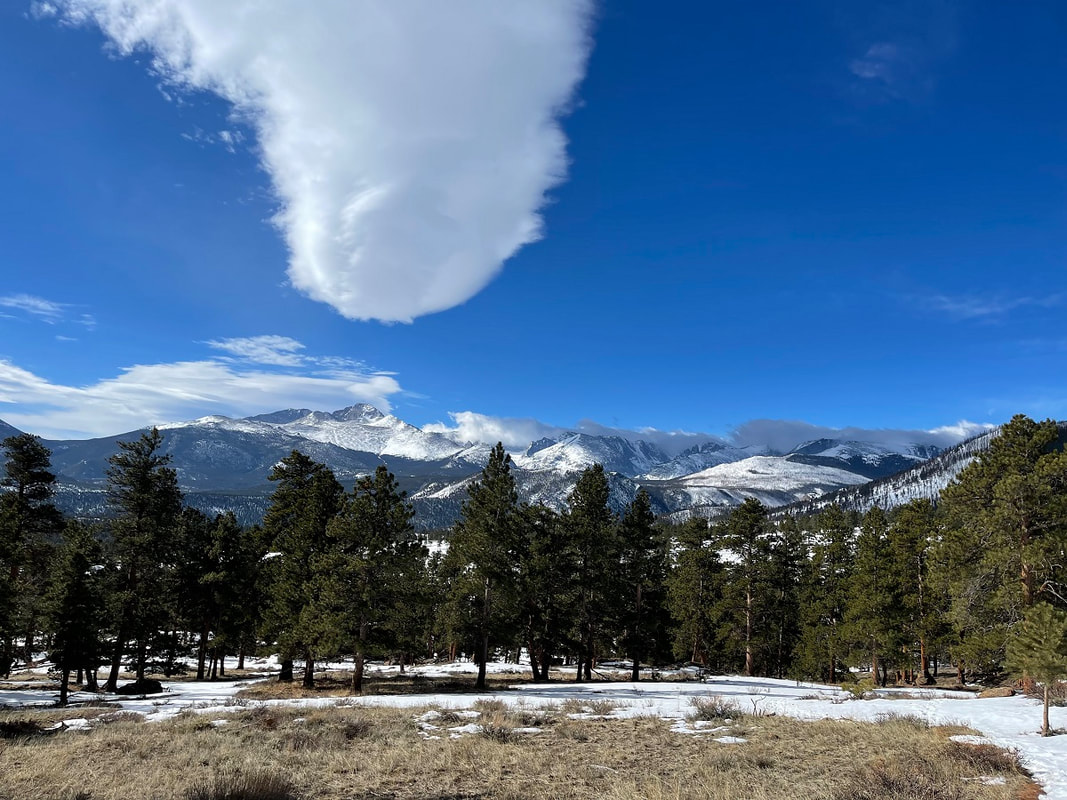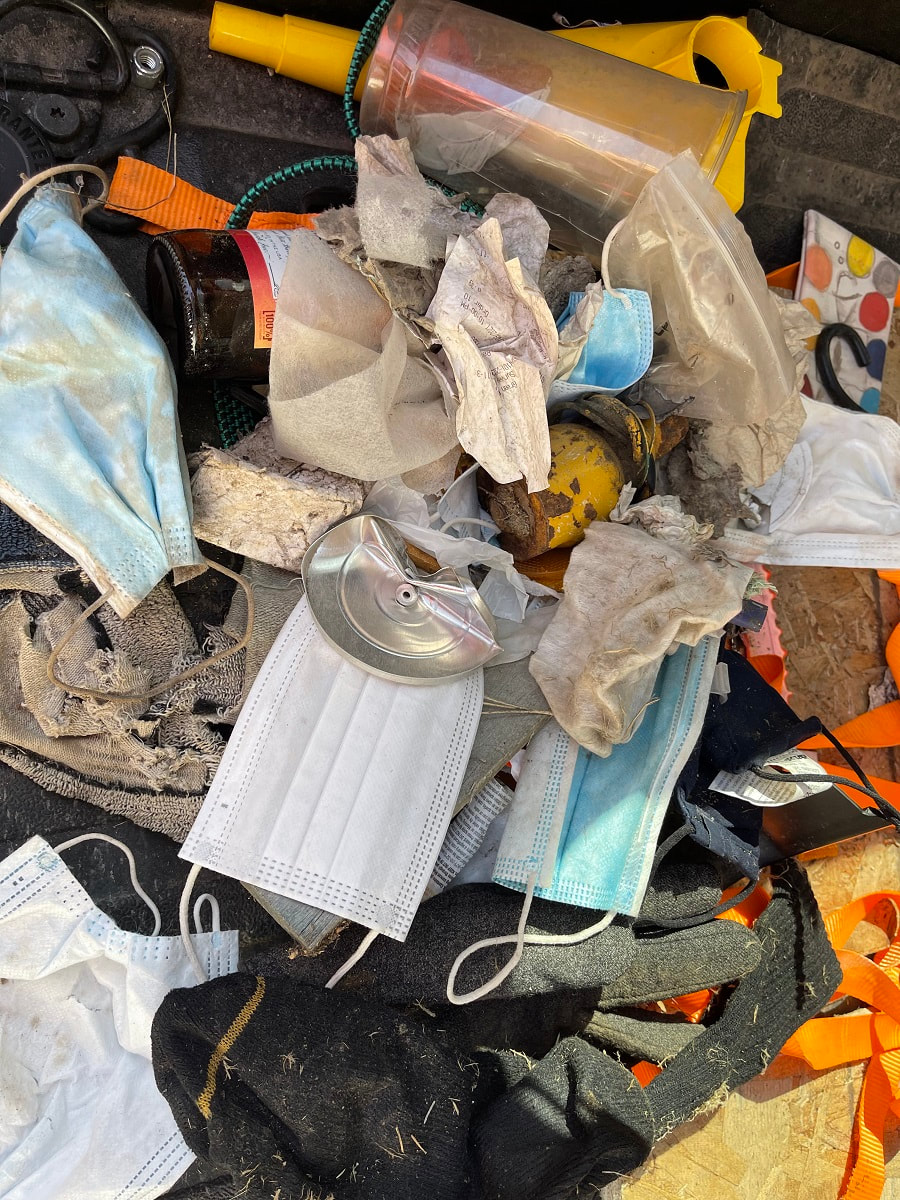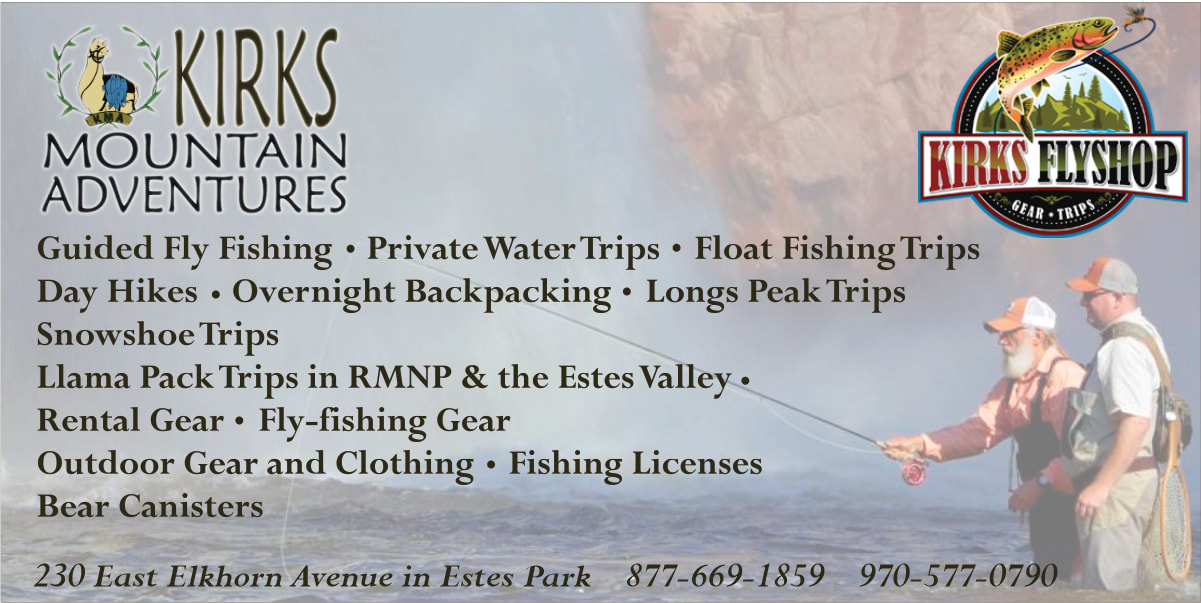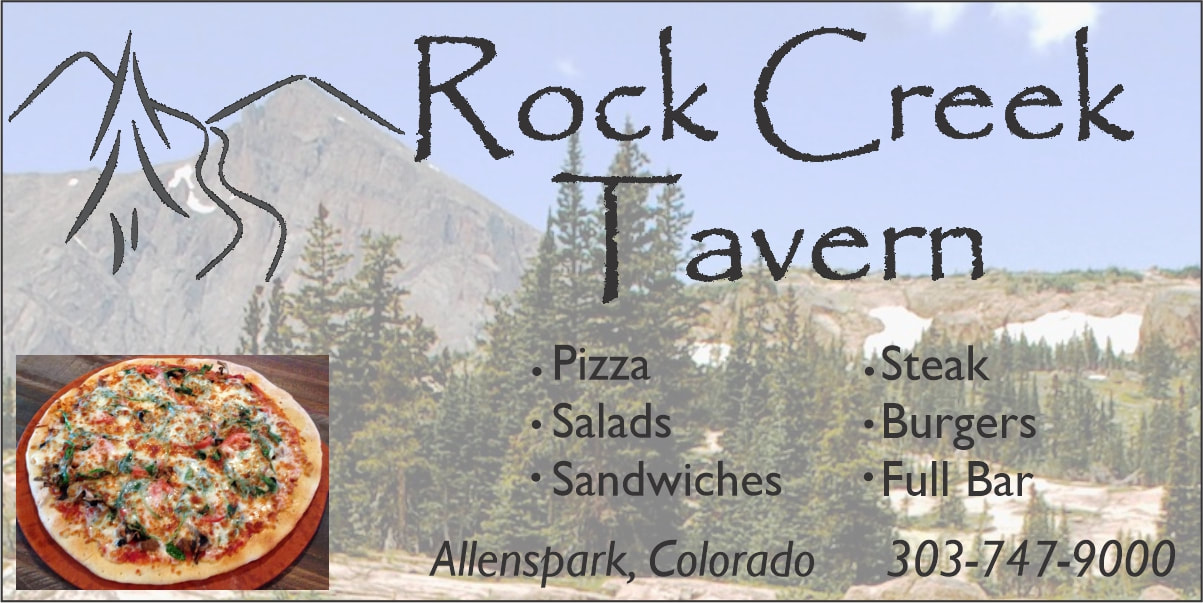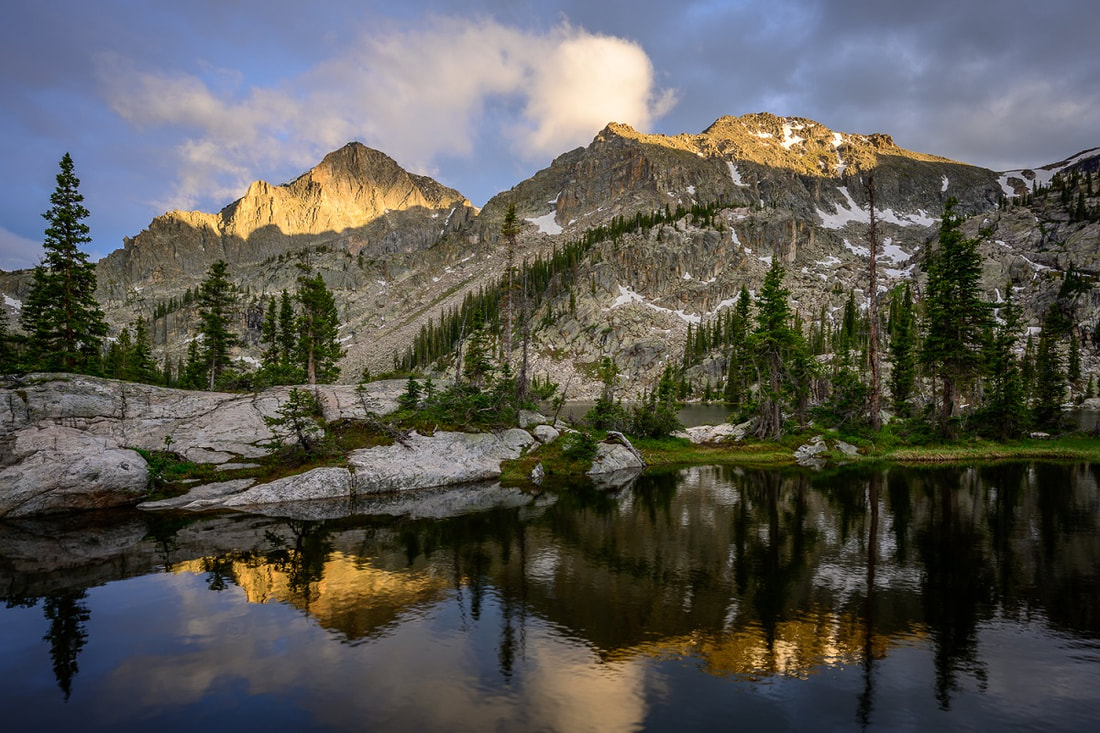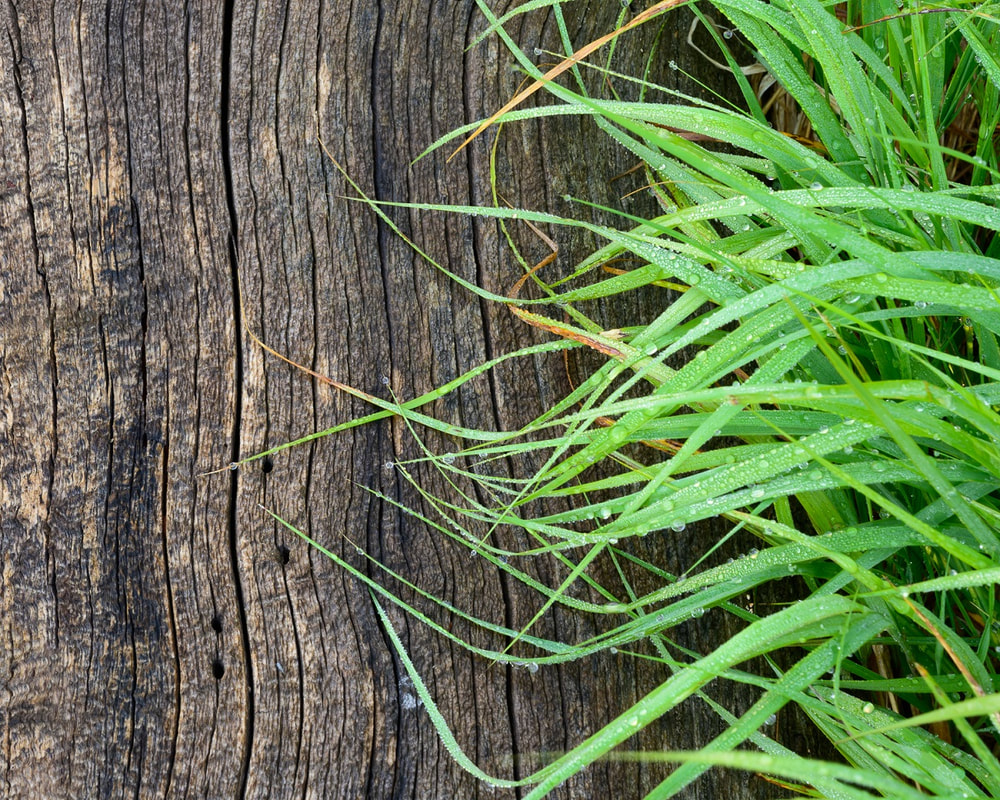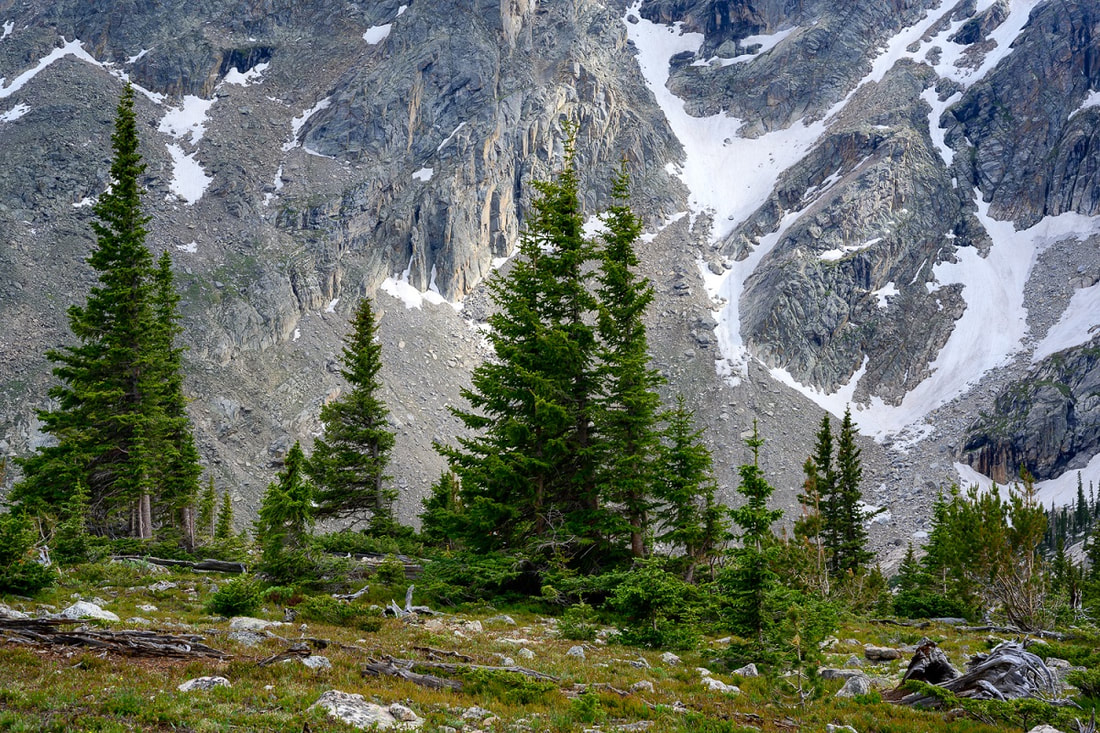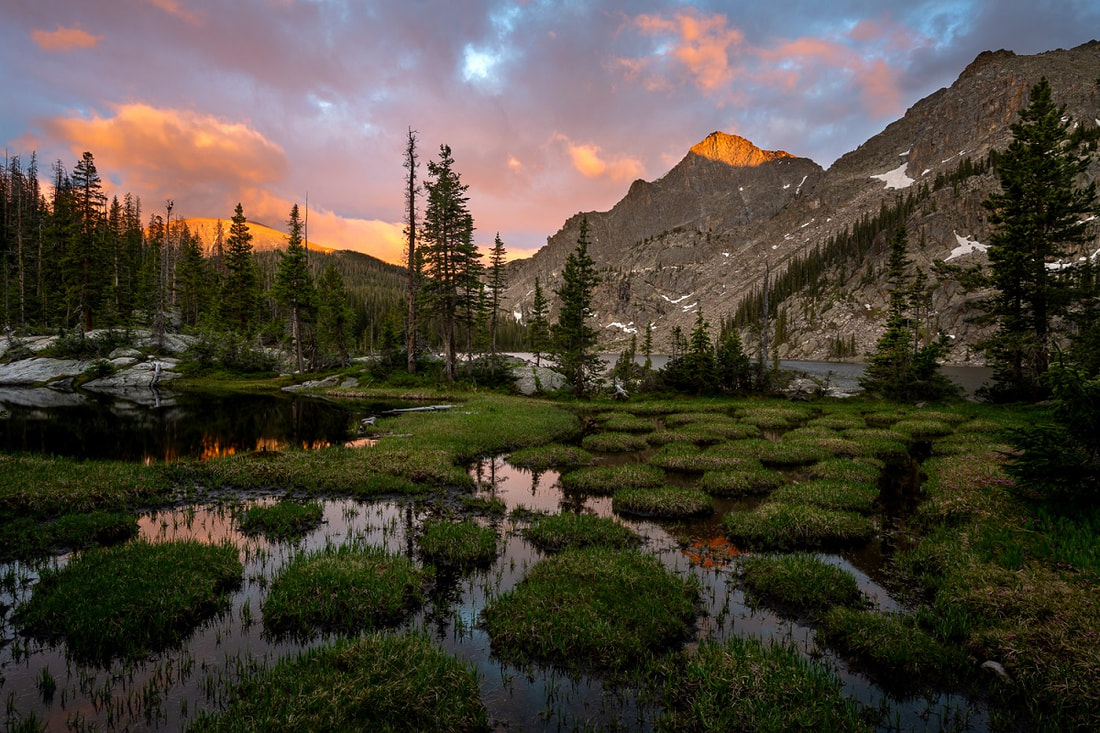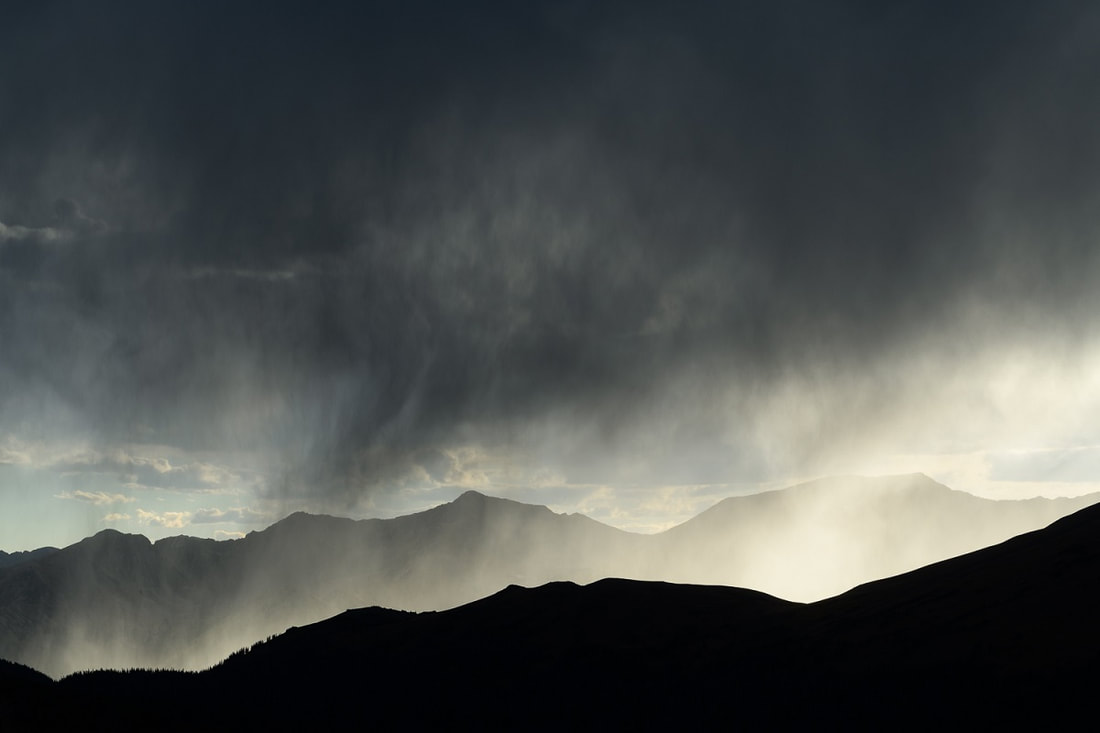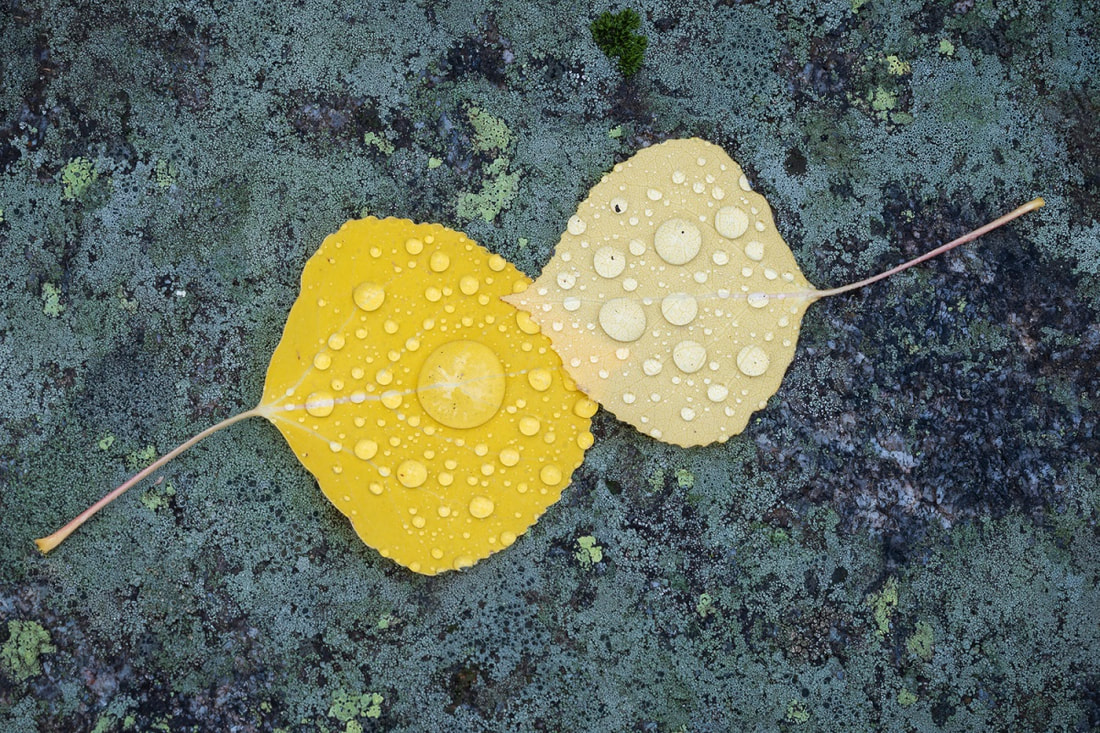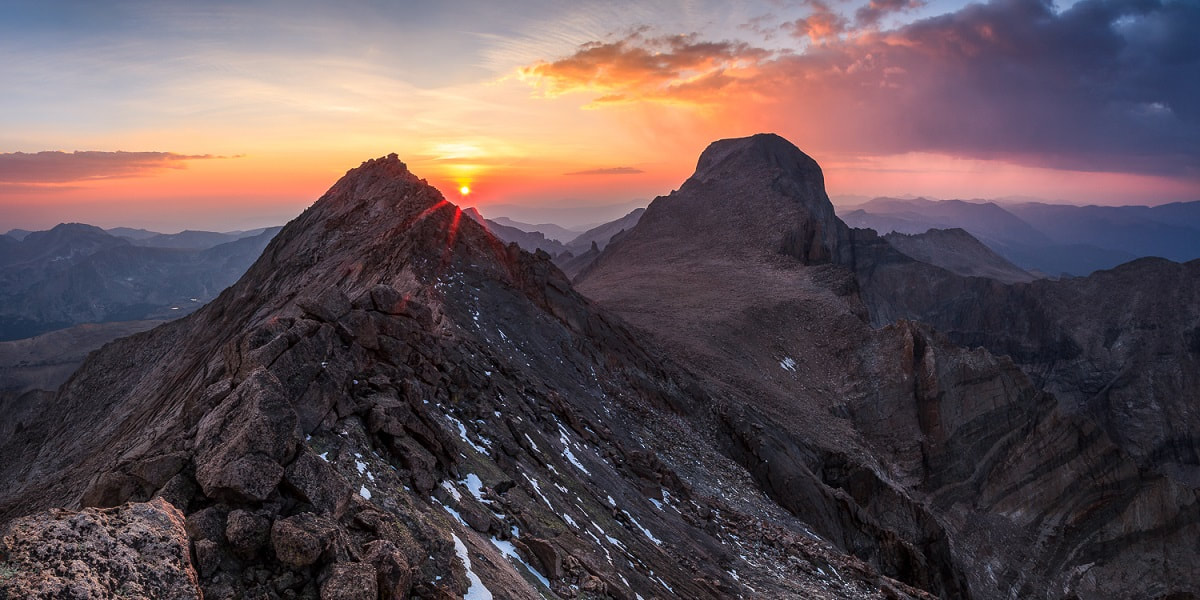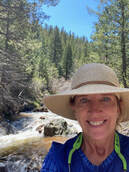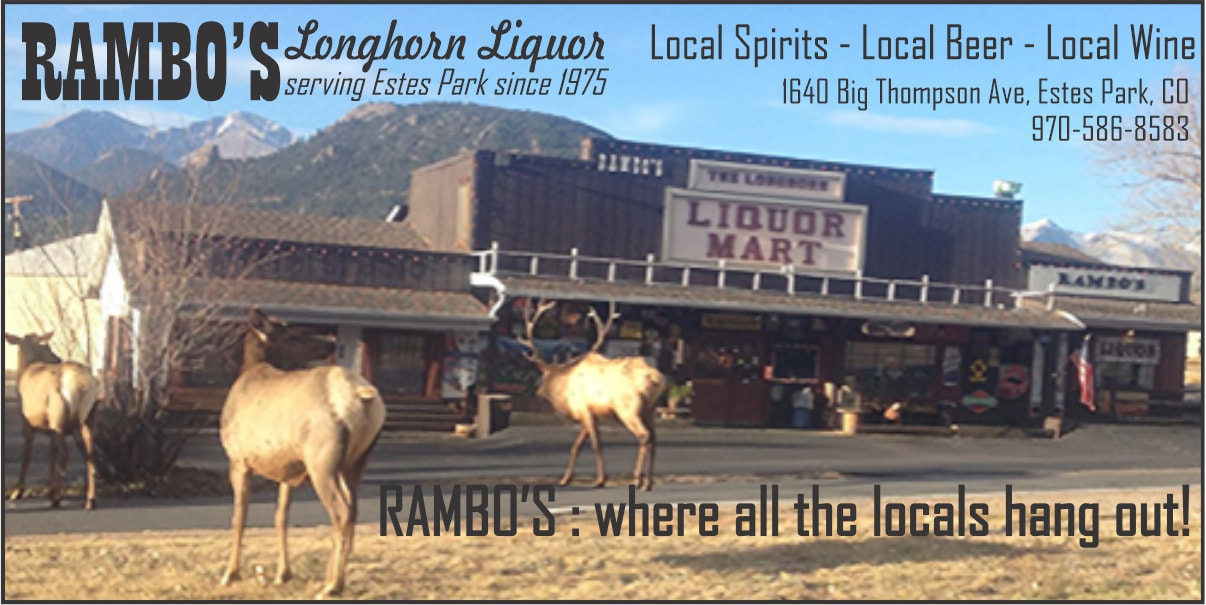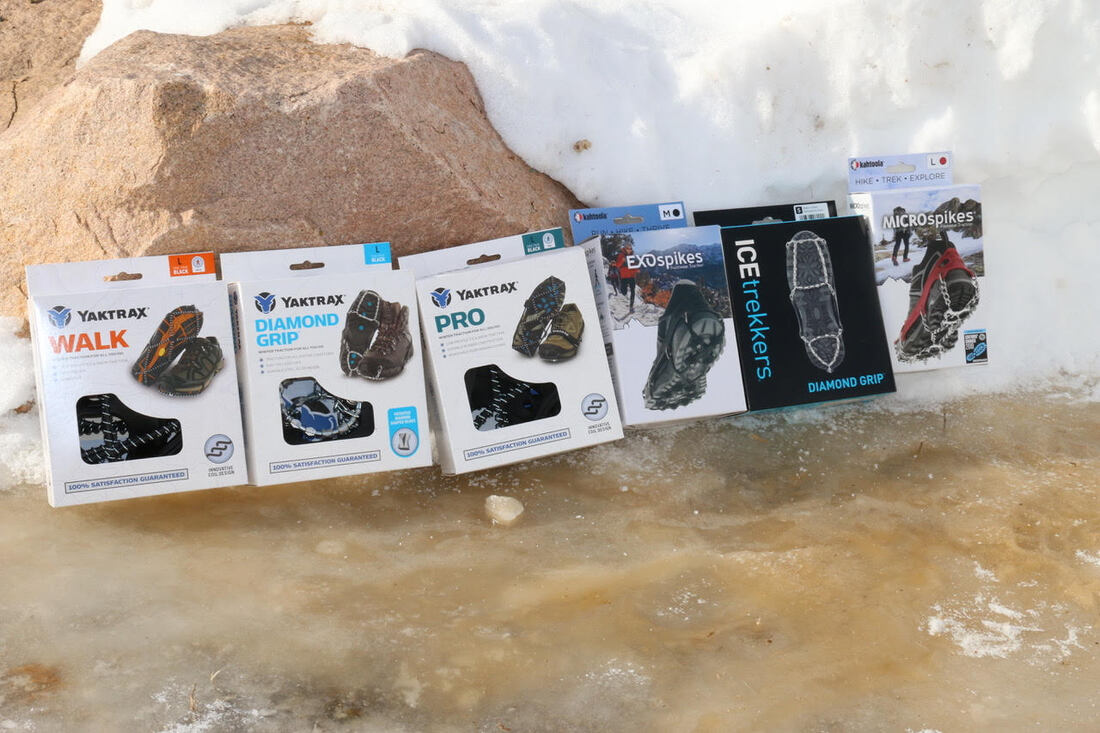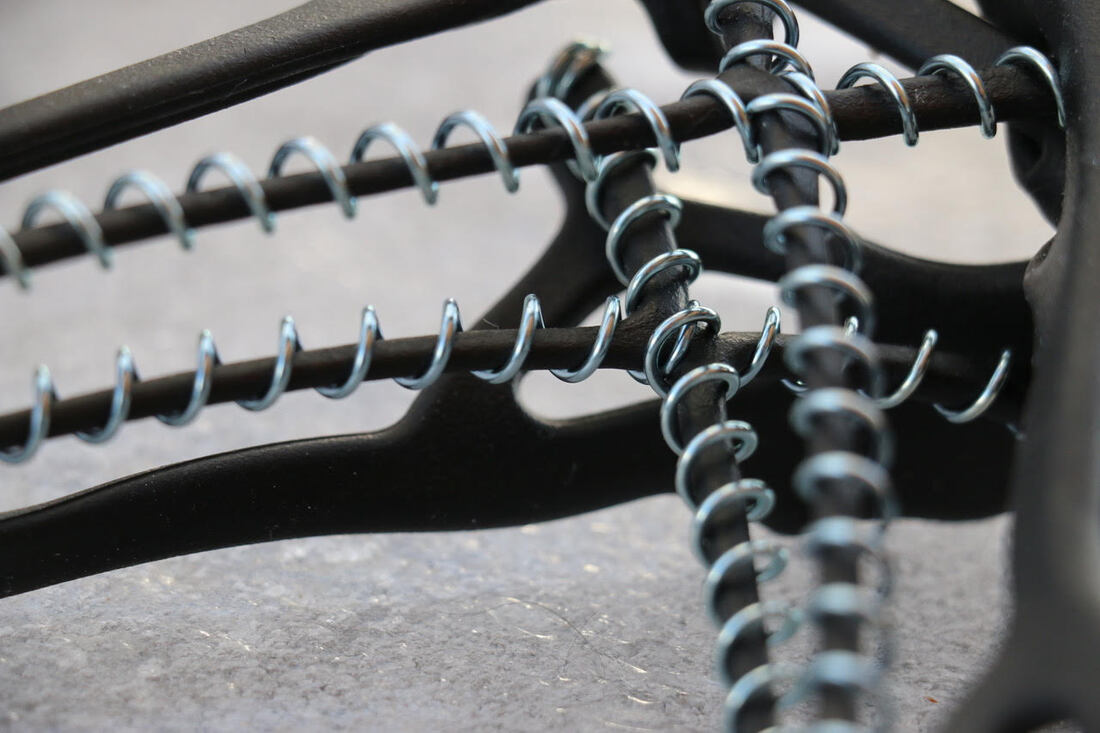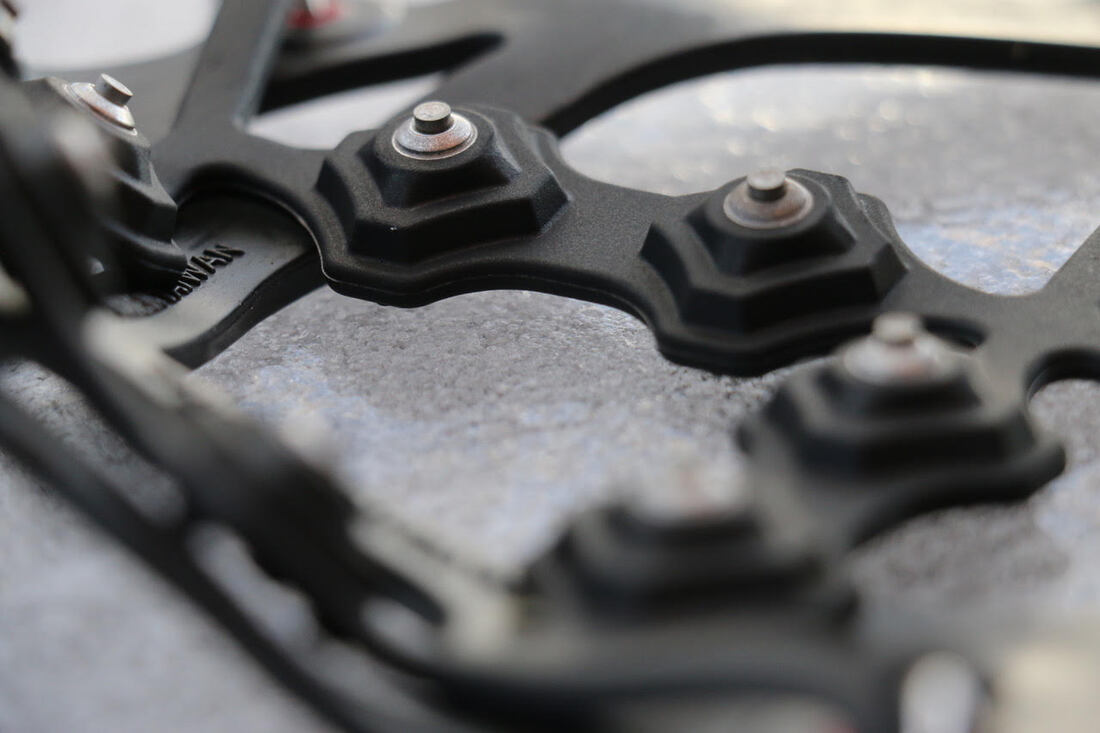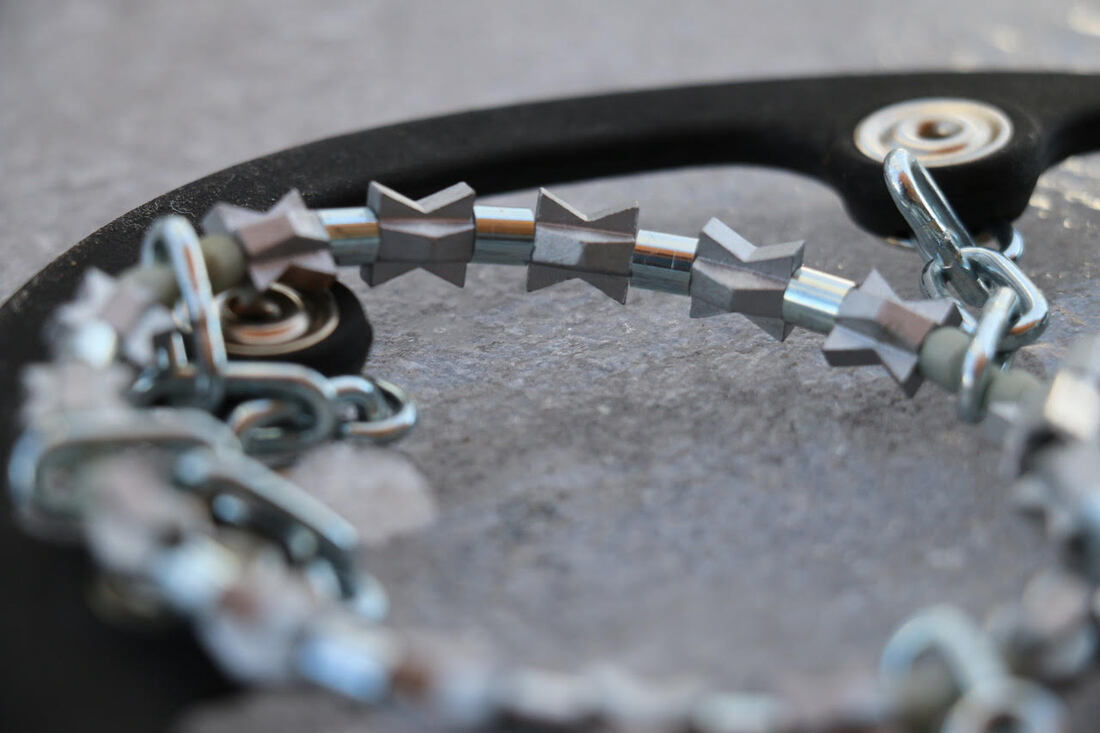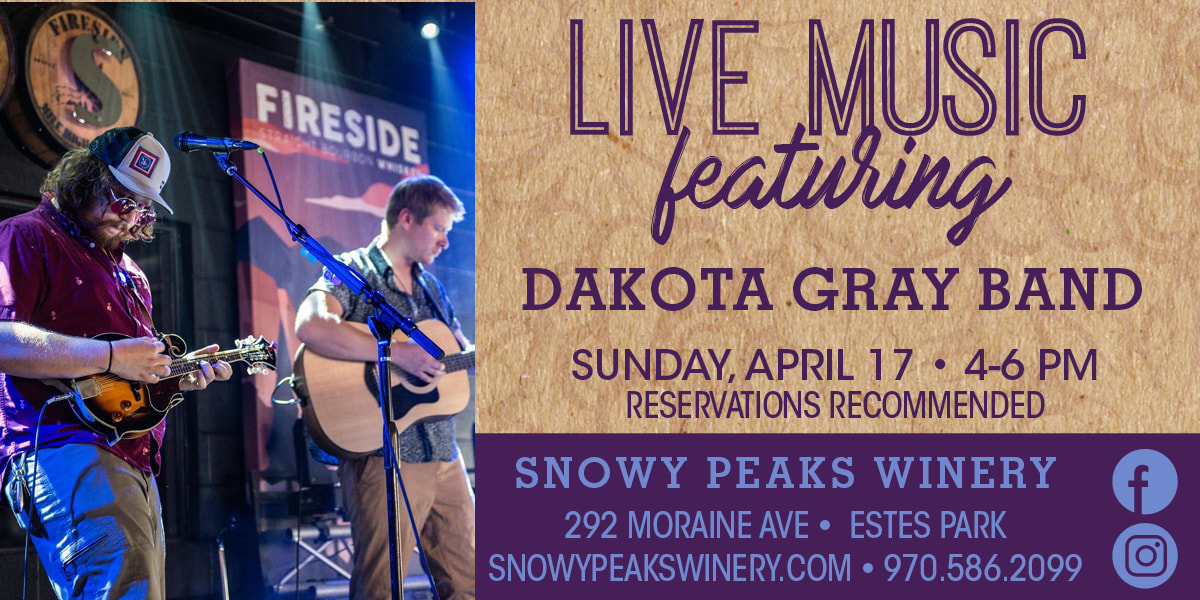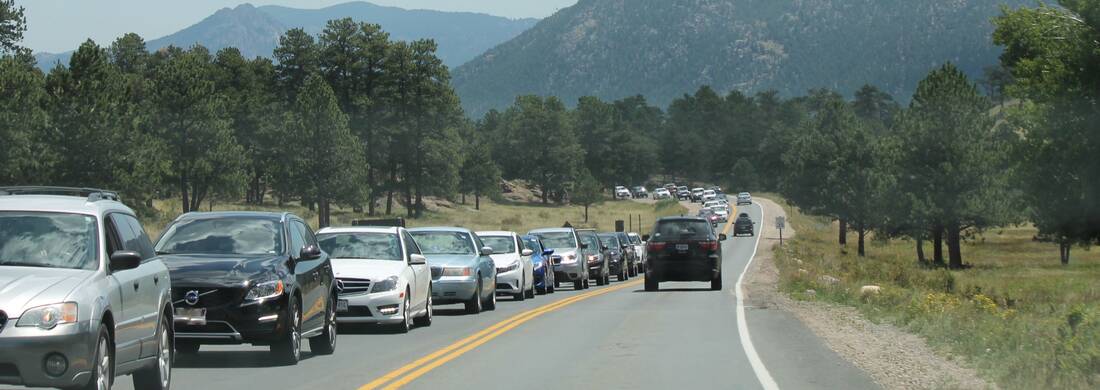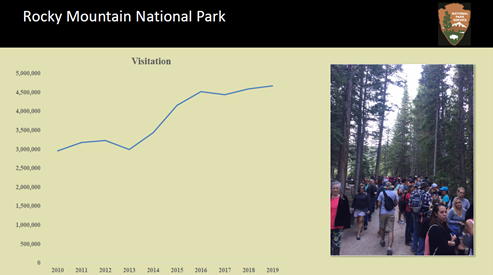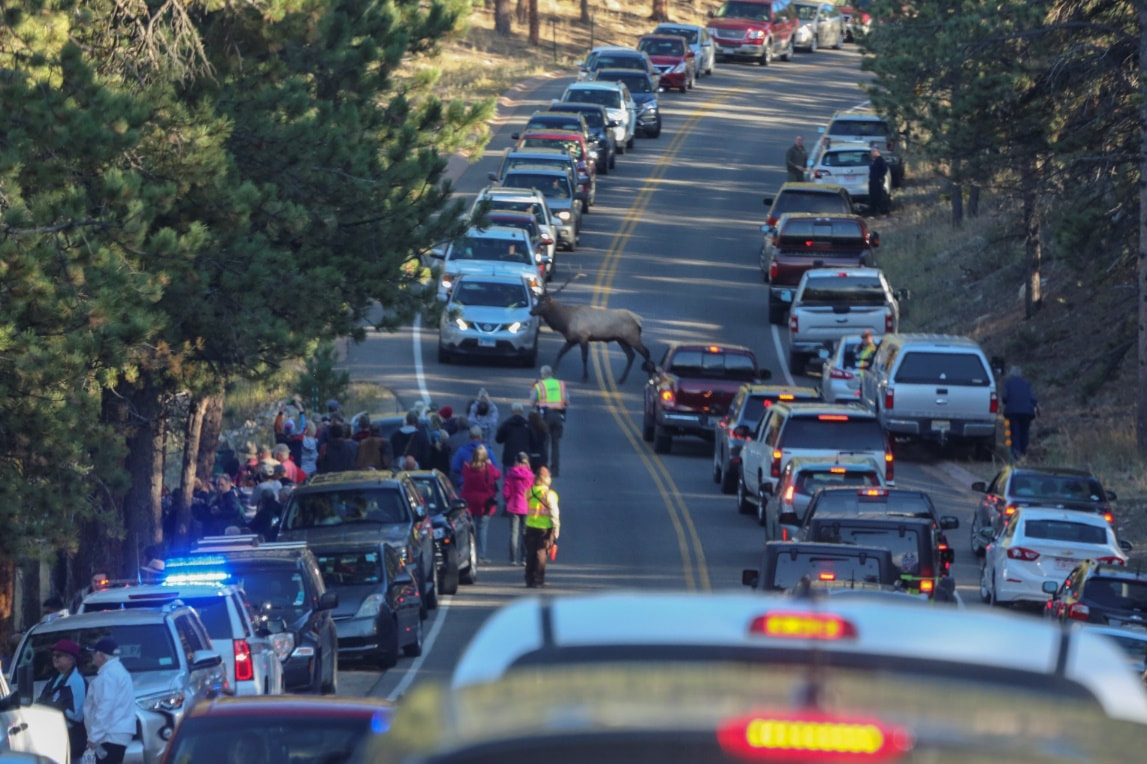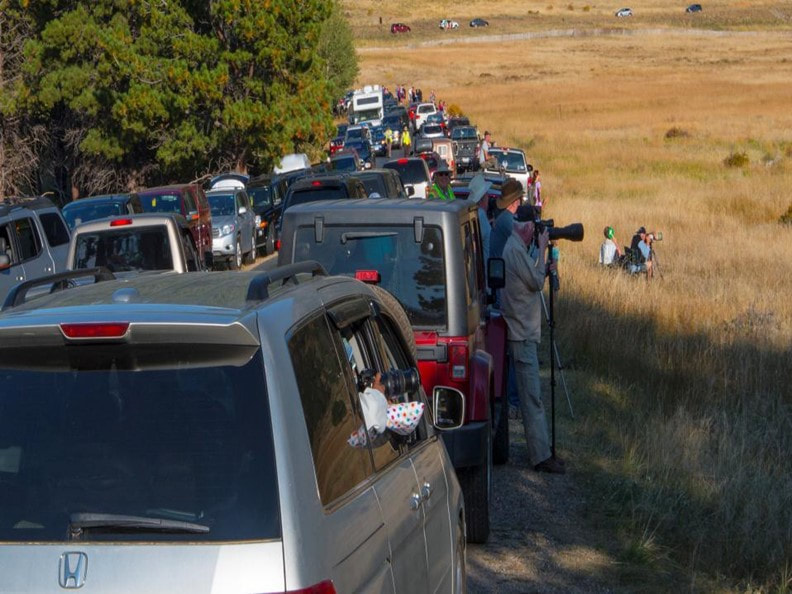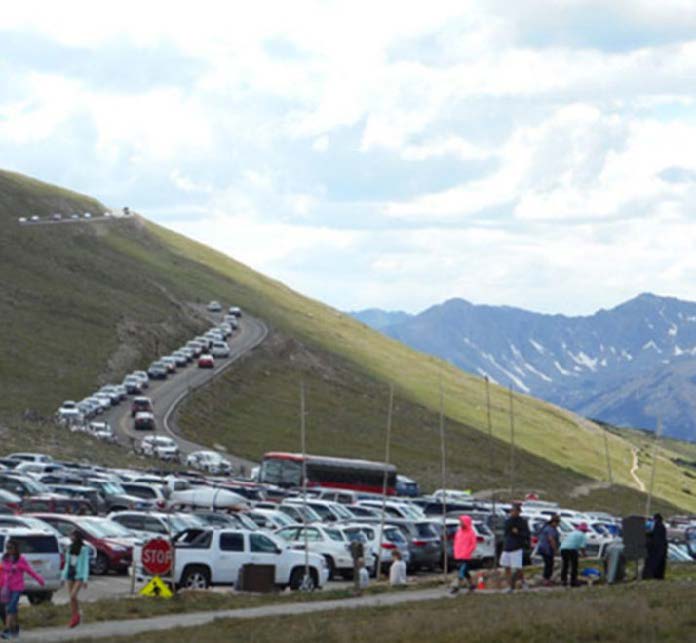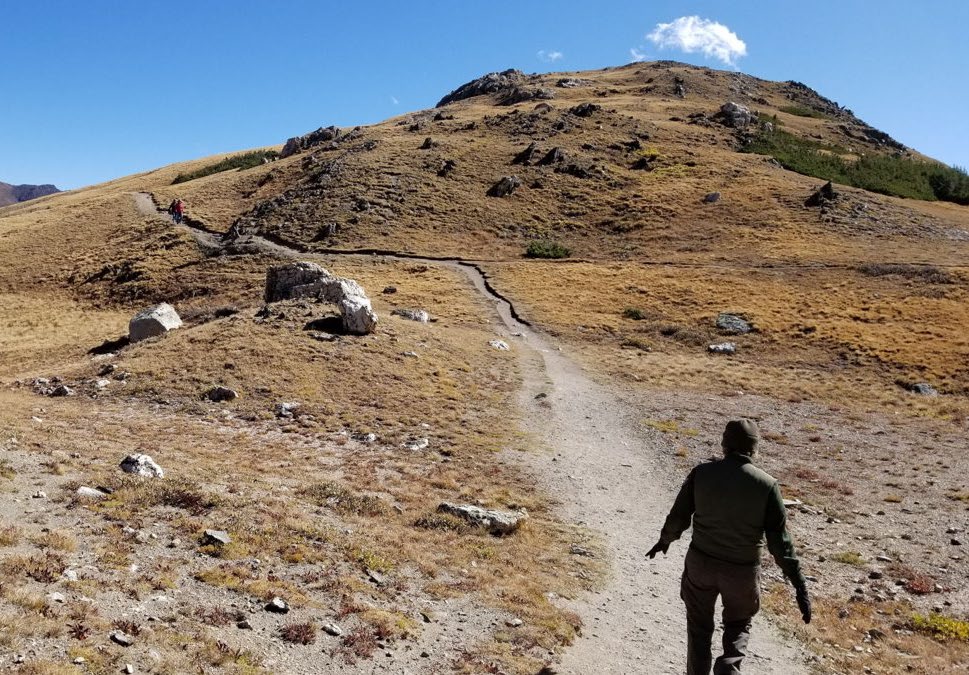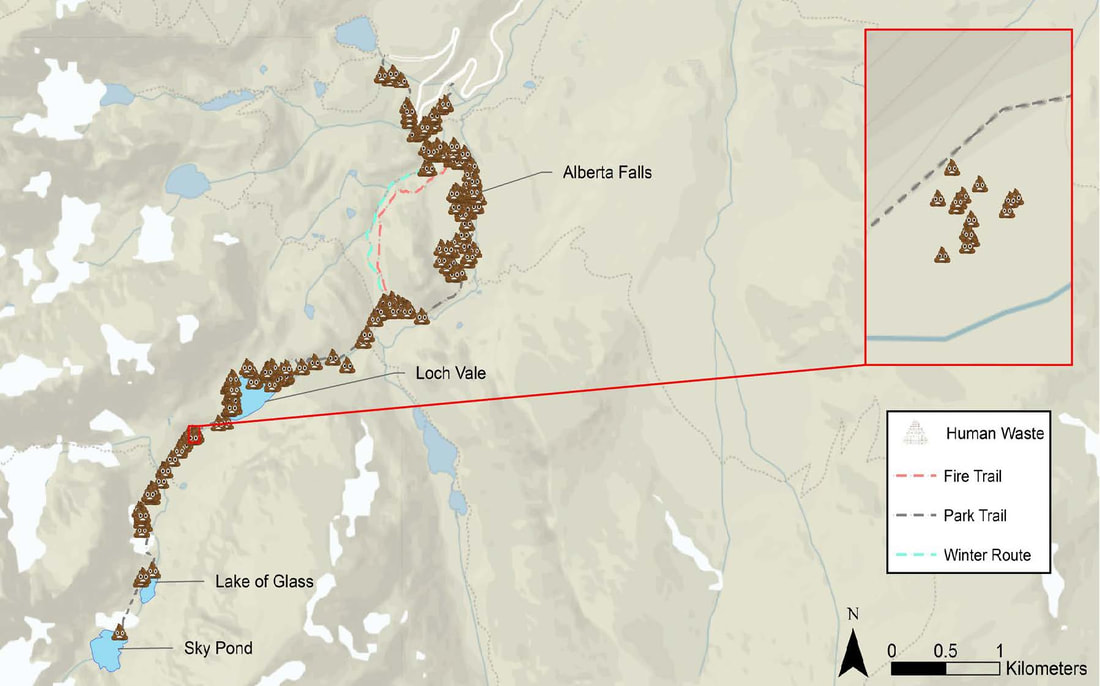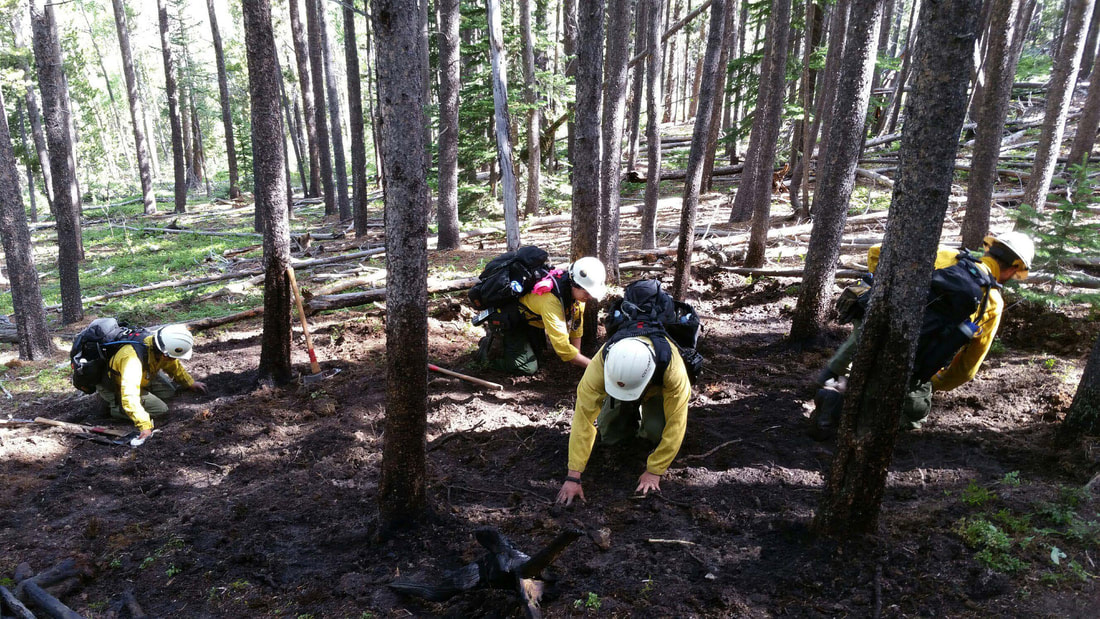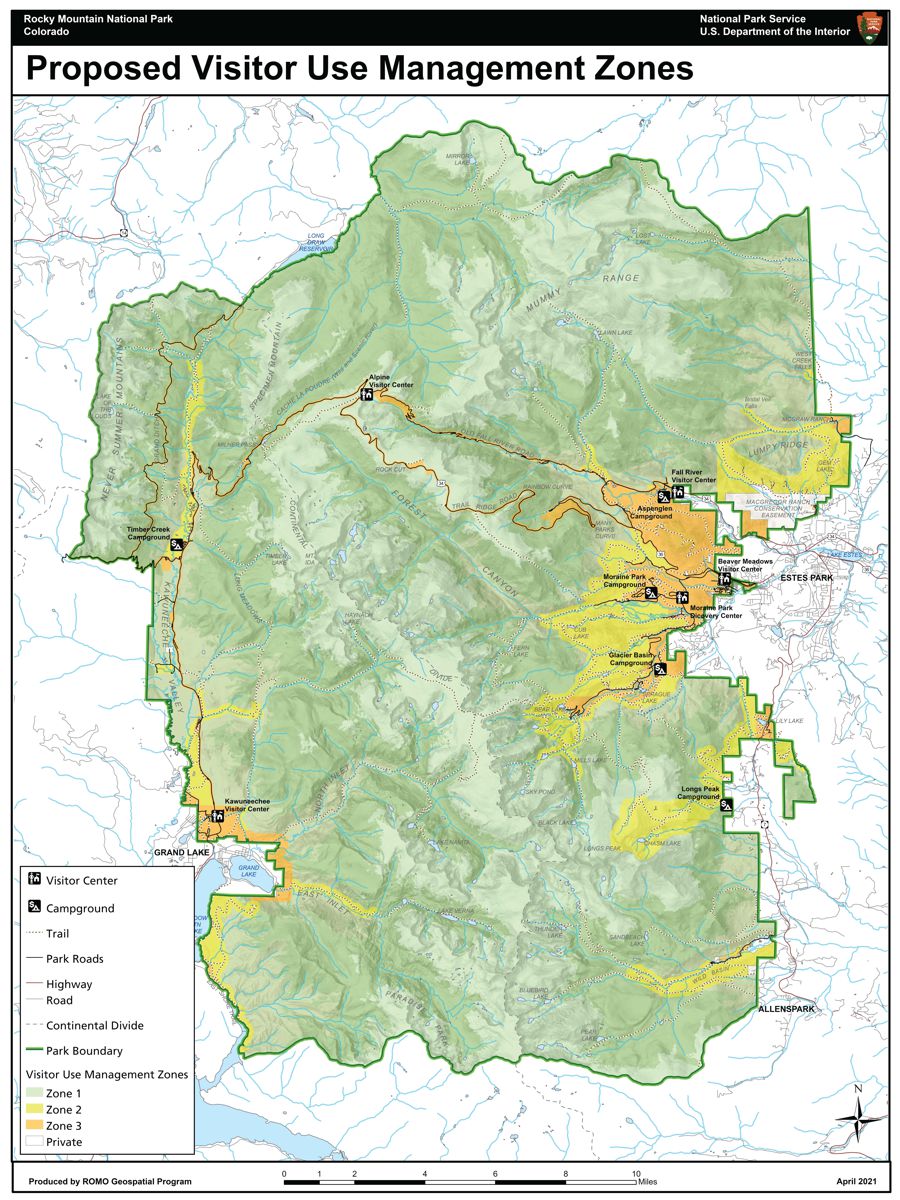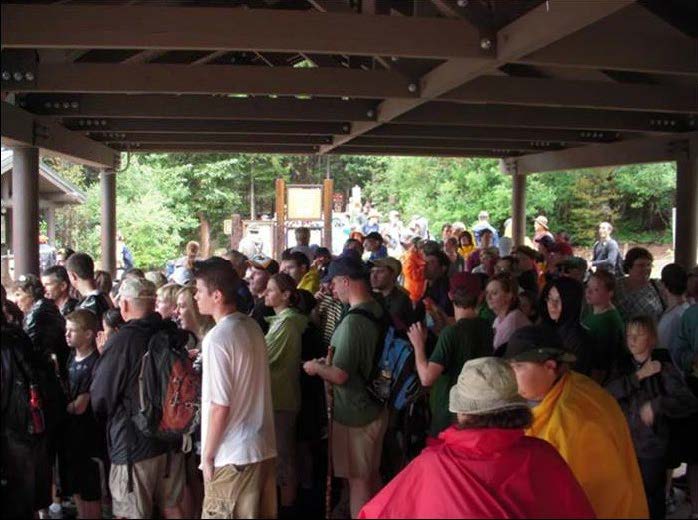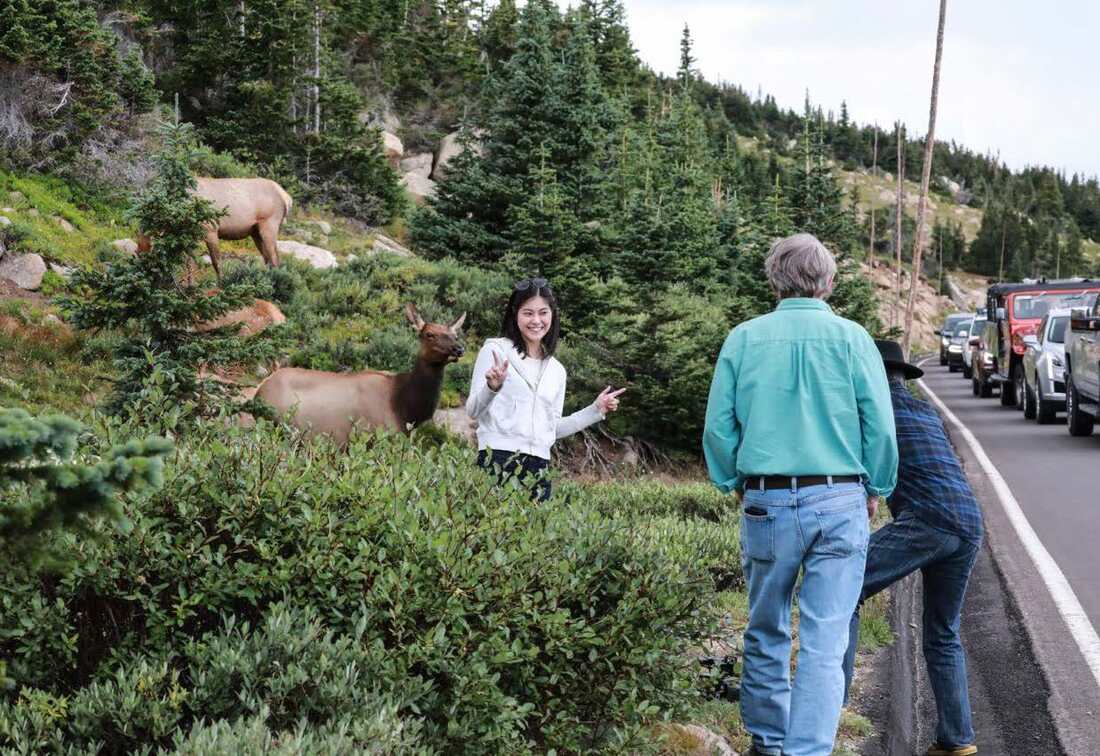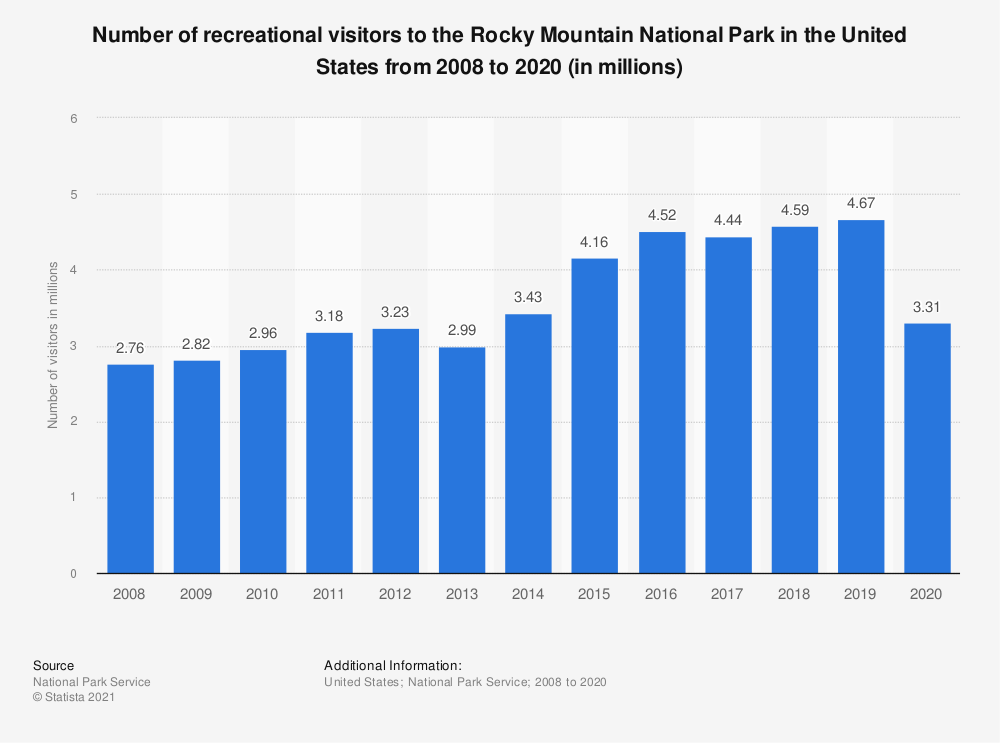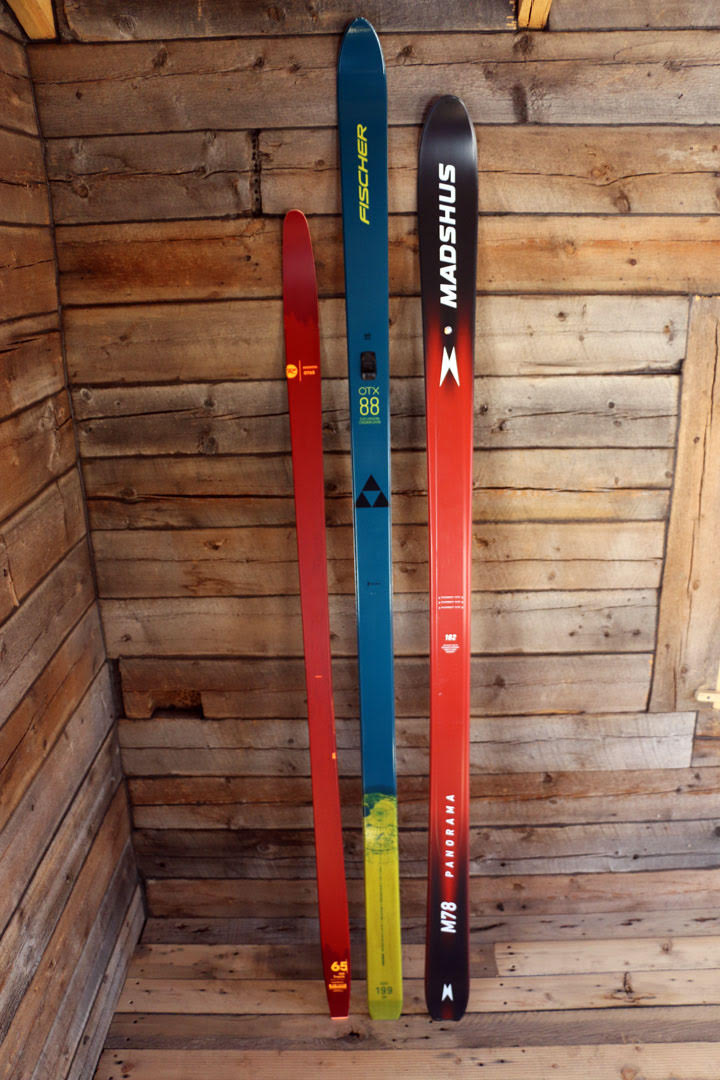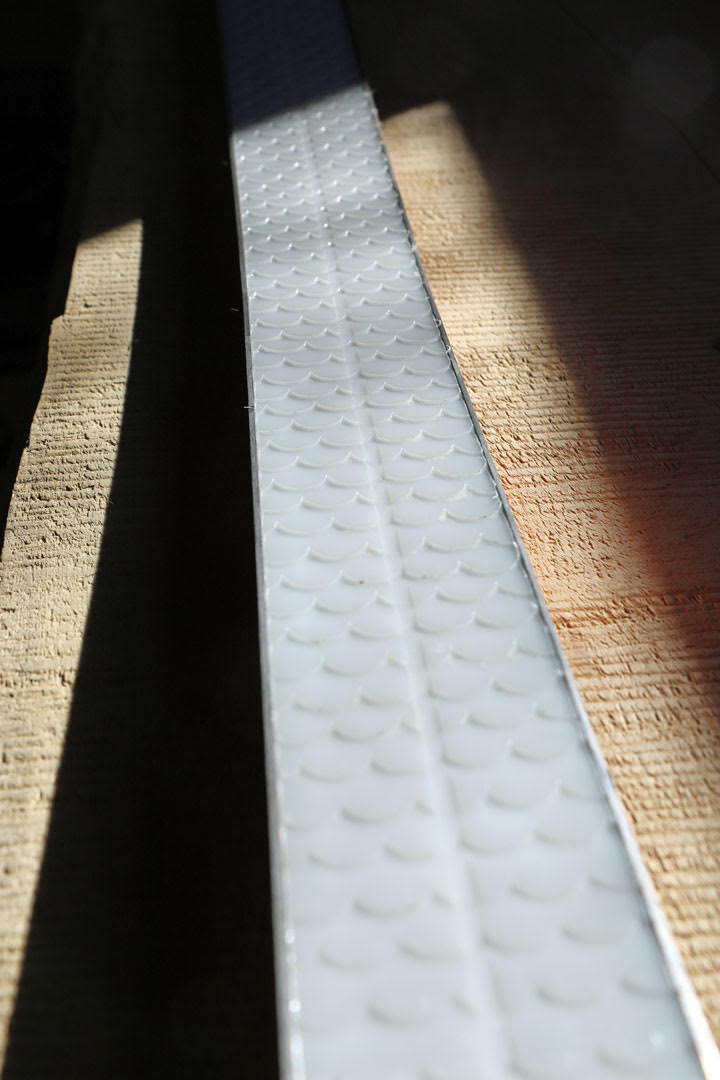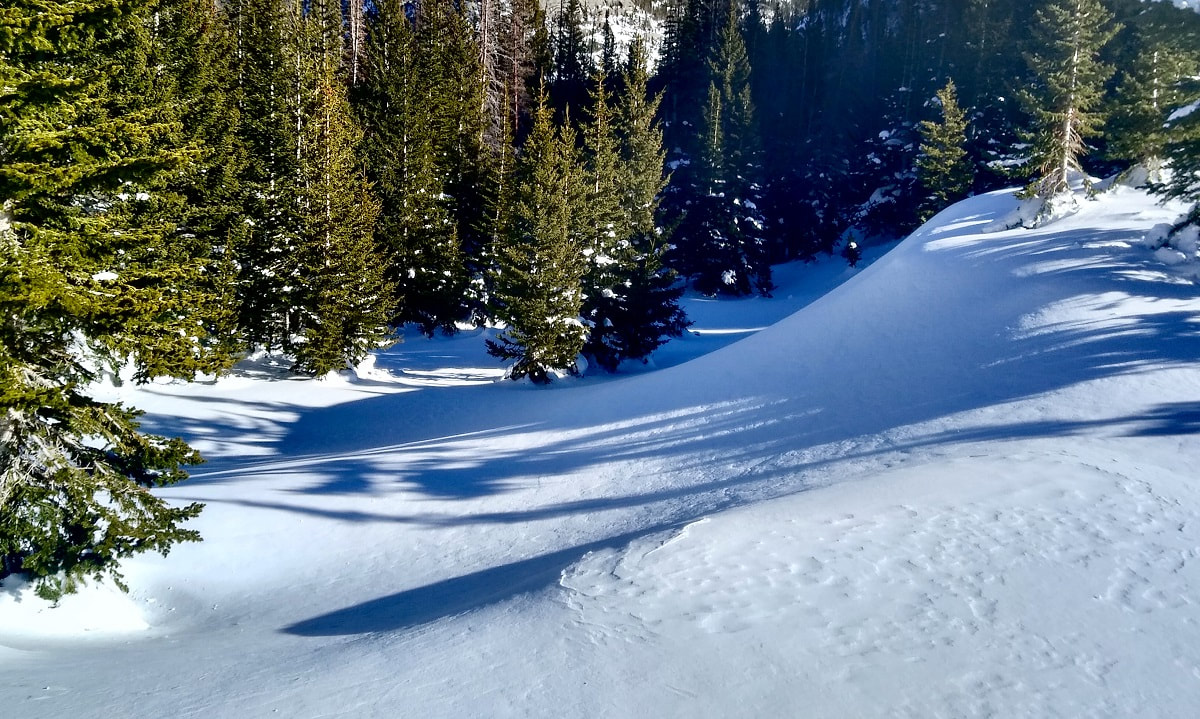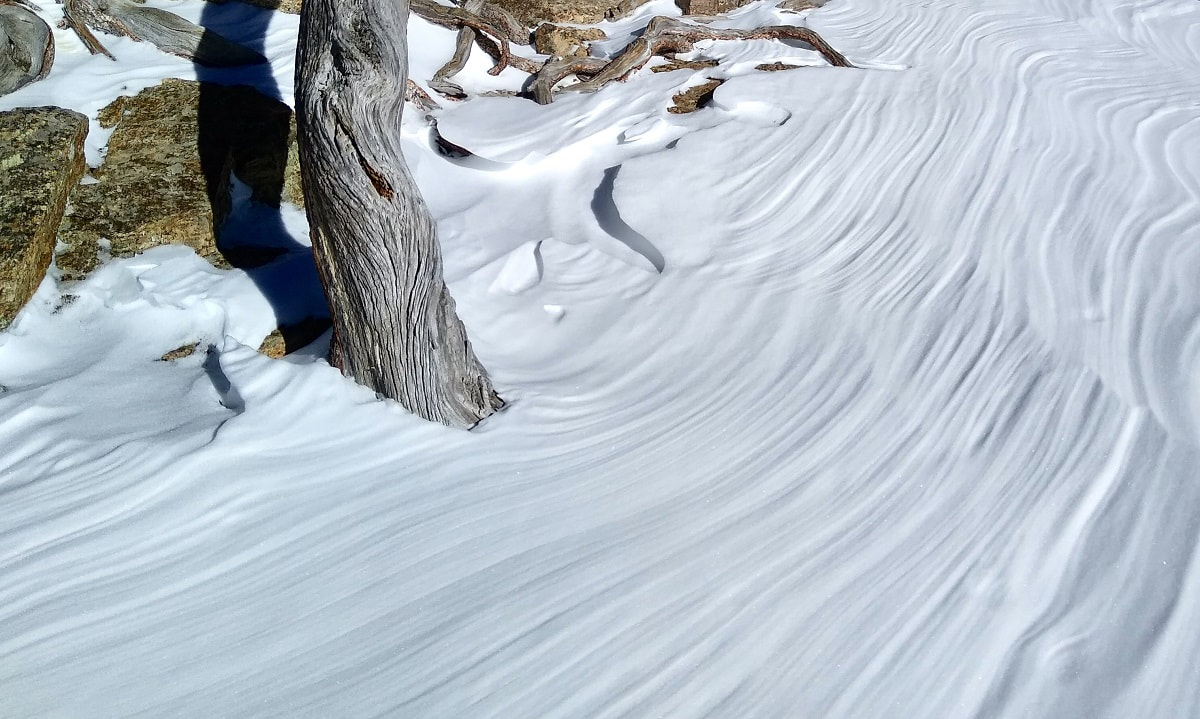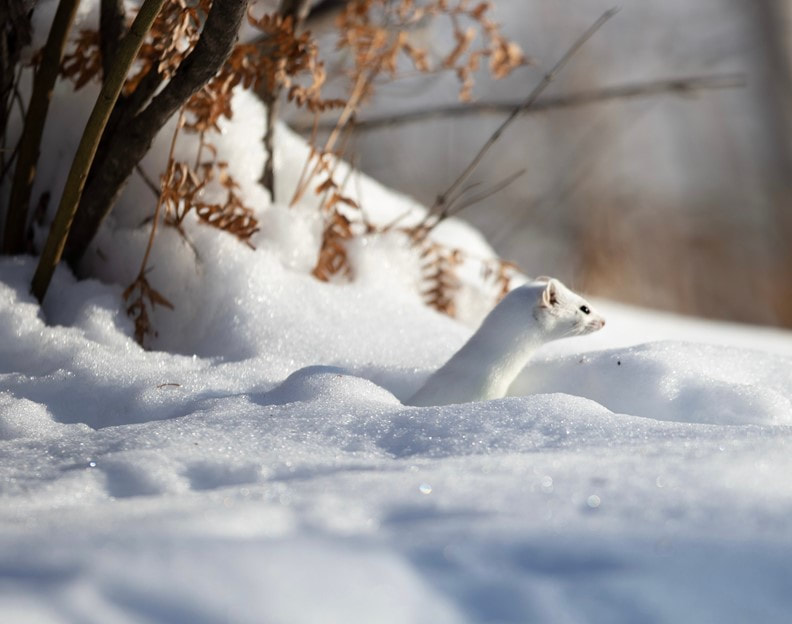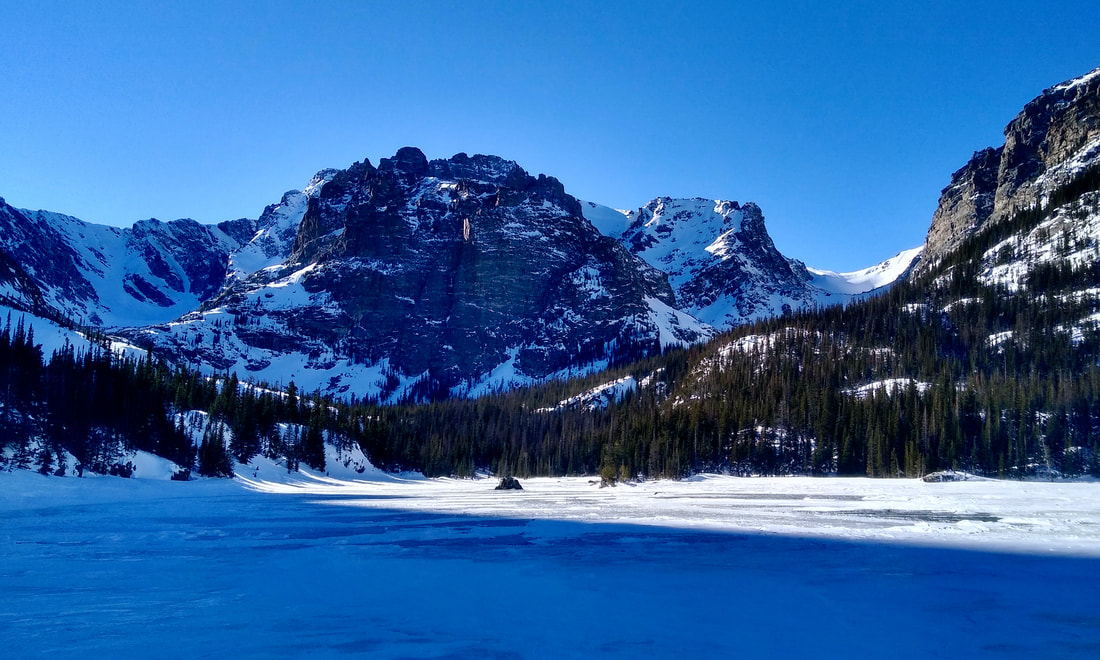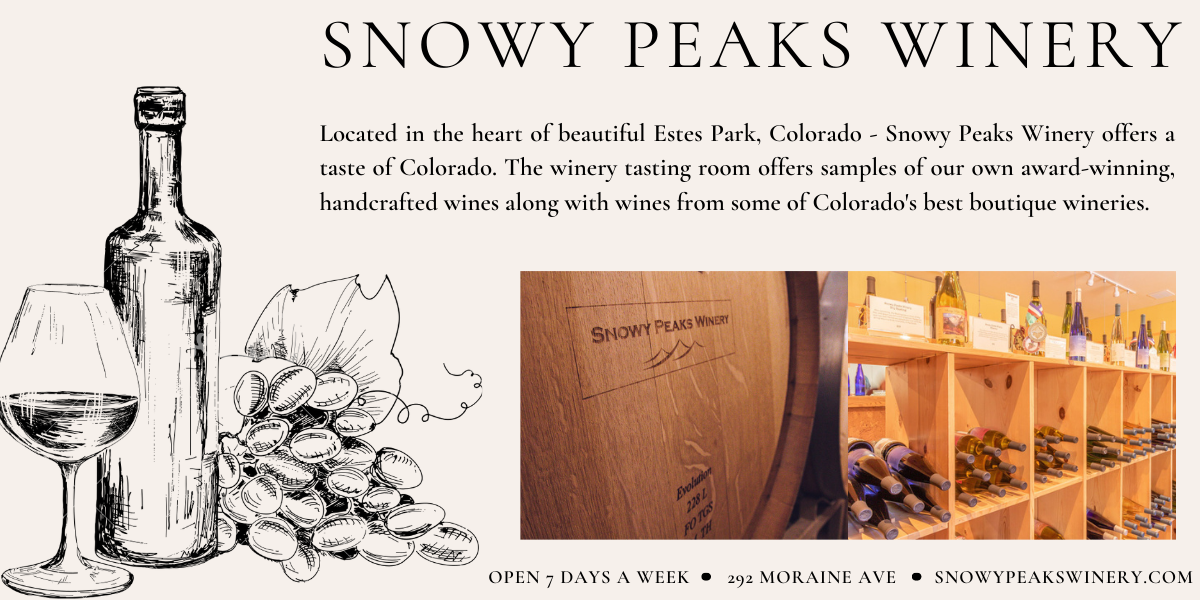The Photography of Deena Marie CzechBy Barb Boyer Buck “My job as a wildlife photographer is to leave wildlife wild… just as I found them," said Deena Marie Czech. It's an engrossing, time- consuming activity that keeps her very busy most early mornings and at dusk in Rocky Mountain National Park. Her goal is not to “capture” wildlife in a quick photo that can be taken from the car or jumping out to get a quick shot of a herd of elk; Deena draws on her lifetime of observing animal behavior and incredible patience in her photography. Deena was born in Minnesota but has made the Tahosa Valley home for the past 30 years. “I grew up 'Midwest practical,' with parents that had a low threshold for goofing off, arts, or creativity. When I moved to Allenspark, it was always a challenge to stop doing all the responsible things and just go play in the woods. “Well, that's over! Let the dust bunnies and dishes pile up cause I'm going to go look for river otter.” She learned tracking skills from her father; family “vacations” were centered around the hunting seasons he participated in and always involved hiking and camping. She's very comfortable in the woods. “When the moose first came to Allenspark around 1999, I had only a tiny point and shoot camera,” she explained. “I had a keen interest in moose so in between my responsibilities, I would sit and watch them. Any picture I got was terrible. in 2000, I discovered what is now commonly referred to as a (moose) nursery area. “Mamas would come and have their babies and remain for on average three-four weeks before moving on. Many folks know the location in Rocky that is on the West Side, but this discovery was in my back yard and only mountain folk who knew how to keep their mouths shut knew about it. Sadly, I still couldn't get a decent image to save my life. So, every year I would invest in a little bit better gear. But it, and I, failed miserably,” she said. Over the years, she began investing in better and better equipment and attending photography workshops. “In 2013 I was spending time in New Mexico and a wonderful man named Dennis Chamberlain told me about the Lens Enchantment Camera Club. Everything changed. Wonderful mentors like Keith Bauer who is brilliant at teaching workflow, gear, and all that yucky geeky stuff helped me tremendously and still does. The camera club also had casual critique nights where members would submit images to be critiqued in a helpful, kind, and humorous way by LeRoy Perea. “All of these folks with their love of photography and willing to mentor people helped me to finally get a glimpse at the possibilities for my photography. It was a long road to get all the components necessary for some solid photography, but I'd say in 2019 the gear end of things finally came together allowing me the ability to not be held up by lesser quality gear.” She's held several occupations to support her passion. She's been the owner and operator of a critter sitter/home check business for 17 years. “This is hard work come winter when you have many clients first thing in the morning, often starting with a snowshoe into property to feed horses before the sun is up,” she said. “It's a privilege to be trusted by so many to take care of what is so very important to their hearts.” She also runs a wholesale business, marketing merchandise for tourism and mountain living and served 15 years on the Allenspark Fire Protection District. “I still hate driving big trucks,” Deena said. “Small community fire departments are challenging because you often know the person affected by an emergency. But that that same familiarity also allows you to bring their groceries home after they crash a car or to take care of their animals when an unexpected emergency arises. “It's aways an honor to respond to any call to serve.” Deena is also very involved with dog rescue work. She's fostered 20 dogs for different rescue groups and volunteers in numerous ways to their efforts. “Giving pups a soft place to land is a privilege and finding those pups a perfect home is magic,” she said. She plans to stay involved in this type of work “fur-ever.” Photography is not just an occupation for Deena, it has driven her behavior and created friendships over the decades. She lives near Wild Basin, once considered “the back door of Rocky Mountain National Park” by the local “mountain folk,” and has seen that area's quiet, pristine wilderness change over the years as Rocky has become more popular. “Even though those days will never return it still is my happy place,” Deena said. “When hitting a trail, I can always see and hear friends, family, and lovers that shared that trail with me in the past. I need only to look at the bridge and see a young Paul catching a brownie (trout). Mike and I getting lost in the willows while wearing the heaviest waders ever made. Having to dive hastily (and with no grace at all) off a trail as a bear came running straight at a couple of us out on an evening walk. And how we laughed for ages about it. “The time that Ken yelled, ‘STOP!,’ and jumped out of my car to run over to some wood lilies. They would be the last ones he ever saw. I only need to glance in the area of an old great horned owl nest where Kathy and I would sit and watch the silly owlets while we gossiped about the day. Her giggles and 'never-got-over-the-70s hairstyle' foremost in my mind's eye. “The animals I photograph are amazing and I am rich in blessings to be able to do so. But for me, it's the pictures in my head, and not my camera, that makes Rocky so special to me.” Her advice to others seeking the perfect wildlife shot is simple. “Run your own race,” she said, “and simply mind your manners, and your impact. “It's so easy to look at someone else's work and think they are better or that they are worse than you. Neither is true; you are only at different stages. If you love photography, then your work will continue to evolve, and you will create your own style. Many things need to come together for a successful wildlife image in an environment that you have no control over. It can be frustrating, so it is hope you lean into. Hope that today is your day that everything lines up and the magic will happen,” she said. While she continues to “hunt” the perfect wildlife shot while not compromising the animal's natural behavior, she is exploring new avenues in her craft. “My choice currently is to not do straight photography. Rather, I love exploring the computerized dark room named Photoshop that Ansel Adams started with his bold adventures and unconstrained exploration of his dark room. Most of my images you will clearly see my own experimenting and play but on occasion I can evoke a bit more subtly. “I believe that people save what they love. If an image or a story can facilitate a connection to wildlife for someone then that is the best I can hope for.” To see more of Deena's photography, visit the Distant Harbors Gallery in Allenspark, or on instagram https://www.instagram.com/wild_basin/ 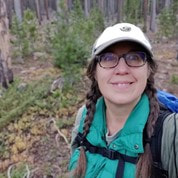 Barb Boyer Buck is the managing editor of HIKE ROCKY magazine. She is a professional journalist, photographer, editor and playwright. In 2014 and 2015, she wrote and directed two original plays about Estes Park and Rocky Mountain National Park, to honor the Park’s 100th anniversary. Barb lives in Estes Park with her cat, Percy.
0 Comments
Every day can be a rainy day in Rocky this time of year Story and photos by Murray Selleck, HIKE ROCKY’S equipment specialist Editor's note: Murray's recommendations are based on his decades of experience in the outdoor clothing industry and neither HIKE ROCKY magazine or the author received compensation from the brands recommended. One of the most exciting things about rain gear is the fact that if you are wearing it, most likely it's raining! In the arid, drought-stricken west, a rain shower, no matter how short lived, is a wonderful thing. However, once the summer monsoon kicks in with its unpredictable drenching afternoon downpours, rain can become your bane. The monsoon can be a gully- washing regrettable experience if you're caught out in the right place at the wrong time. Most of us who love exploring Rocky Mountain National Park and the surrounding mountains have experienced a surprise thunderstorm on a forecasted bluebird day. We might have said to ourselves that a quick jaunt up a trail will be no big deal. A pack loaded with the essentials won't be needed and a simple water bottle will get me there and back. And about when you reach the turn-around spot, or even a little beyond, the skies darken, the wind begins to gust, and a bolt or two of lightning has us thinking, “What was I thinking?” What to Take: Waterproof? Water Resistant? Windproof? Oh my! A waterproof jacket or even a paper-thin windbreaker can save the day. That is to say, if we have enough foresight to take a shell jacket along with us! From short scoots up a familiar trail to day hiking and backpacking to through hiking, which kind of shell you want to bring along depends on trip duration, your budget, jacket features, and your area's most common climate. The conditions: Intermittent rain showers, curtains of virga in the distance, shifting shafts of sunlight spotlighting the valleys below, cool breezes and comfortable temperatures; it’s a perfect day for a day hike. Under these conditions, a lightweight water-resistant shell that doubles as a windbreaker can potentially provide enough protection on this kind of summer day. If you properly layer underneath, it with a tech t-shirt or synthetic or wool next-to-skin layer, even if a shower wets through the jacket to these underlying layers, you can stay comfortable. Mind you, these shells are fine for quick, fast-moving, light showers and not much more. These thin shells serve better as windbreakers than effective rain gear. The jacket's material and tight weave creates the water resistance and wind barrier. Usually there isn't even an additional water barrier treatment. As I said, during a brief shower they can work great, they're quick drying, and they are enough to get you by. Another benefit to a windbreaker shell is how much warmer they can keep you when cool high-altitude winds are blowing. The shell will effectively trap more body heat around you leaving you the perfect temperature! You roll the dice with this style of jacket. Hit the trail and take your chances when it comes to the weather. Bluebird, showers, or come what may! The conditions: drenching downpours, heavy monsoons, mountains peaks disappear behind thick curtains or rain, gobs of grapple, trails turn into creeks of running water, unforgiving hail, thunder, and lightning… You’re in the thick of the storm now! You had better armor up when Mother Nature decides to let loose. Waterproof/windproof/ breathable jackets and pants provide the best protection and comfort from hard rains and monsoonal downpours. Along with being waterproof, breathability is an equally important feature. It's easy to make a jacket waterproof but to make it breathe effectively is another. If you are hiking, running, or climbing in a rain storm, the heat you generate will quickly exceed what the breathable laminate can expel. Suddenly you are surrounded by a tropical climate trapped under your jacket and you're getting wet from both the outside and in! I struggle with reduced hearing and vision when I have a hood up over my head. Hearing the sounds of the mountains are reduced and I miss hearing the nuances of the forest. Also, even with the ability to adjust a hood back or forward and snug it to your head shape, peripheral vision can be reduced. I've had hoods that when I turn my head to one side or another my hood doesn't! I wind up looking straight into the hood and not out to the side where I want to look. Don't read too much into my hood dilemma. Hooded rain jackets are far more popular than jackets without. My rant should only serve as a buyer's guide as you try jackets on for fit in your favorite shop. Check out all the features a jacket offers and see if they make sense to you. Waterproof technologies There are two main technologies that outdoor specialty manufacturers use to produce their waterproof garments. DWR (Durable Water Repellency), membranes like GoreTex, or a combination of the two. DWRs are a spray-on layer that can be applied to either the outside of the jacket or as a protective layer over the laminate on the inside of the jacket. DWRs are less expensive to produce so a jacket with this kind of waterproofness is less expensive to buy. Membranes are a waterproof/breathable layer bonded or laminated to the jacket's fabric. They are more durable than a DWR treatment. GoreTex is the most common and recognizable brand in this category but excellent competitors also exist. eVent, OutDry Extreme, Pertex Shield, and others keep the category and prices competitive. A combination of these technologies let manufacturers build 2, 2.5, and 3 layer options. Waterproof/breathable/windproof: bottom line The outdoor specialty industry has no lack of manufactures or choices. There is an abundance of excellent rain gear available competing for your dollars. Gear reviews, online consumer reviews, and manufacturer's highlights all serve a purpose but the bottom line will always be how a specific piece of gear works for the individual who is using it. Read all about it. Learn both how a product excels and what its limitations are. Balance those out to see what fits! In the meantime, along with hiking, climbing, and trail-running in the rain, with the right rain gear choice you can add chasing rainbows and singing in the monsoon! 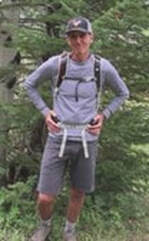 Murray Selleck moved to Colorado in 1978. In the early 80’s he split his time working winters in a ski shop in Steamboat Springs and his summers guiding on the Arkansas River. His career in the specialty outdoor industry has continued for over 30 years. Needless to say, he has witnessed decades of change in outdoor equipment and clothing. Steamboat Springs continues to be home. How climate change is impacting pika populations in Rocky by Barb Boyer Buck The tiny American Pika, one of the most daring and weather-hearty animals in Rocky Mountain National Park, is exhibiting declining population numbers all over Colorado due to climate change. Dr. Chris Ray, a research associate at the University of Colorado, has been studying the American Pika for several decades. In February of 2022, she and a researcher from Northern Michigan University, Hilary Rinsland, presented the most recent findings of their work and the Colorado Pika Project in the Science Behind the Scenery seminar series. The series was sponsored by Rocky and the Rocky Mountain Conservancy and ran from mid-February to mid-March of this year. “We started surveys of the American Pika in Rocky Mountain National Park ten years ago,” Dr. Ray said during her presentation in the series. “We focused on pikas because they have several traits that make them a sentinel (species) for the effects of climate on wildlife. “It’s relatively easy to determine if they are occupying any given spot. Also, they inhabit rocky areas that humans tend to avoid; so, compared to many other species they should be less affected by human activities, other than human-caused climate change.” Pikas are particularly climate-sensitive, needing access to cool climates in the summer and protection from sub-freezing temperatures during the winter time, she explained. The American Pika, Ochotona princeps, is native to Rocky Mountain National Park, and other high- elevation locations in the state. They occupy talus, or scree-slope, habitats above treeline. Busily gathering greens all summer, pikas are the tiny animals in the rabbit family who are often heard chirping communications to their compatriots. Pikas create hay piles upon which they feed all winter, while nestled underground under rocks and a thick layer of snow. They are an incredibly charismatic species, with big ears (similar to a famous cartoon mouse), and they need our help. “By mid-century, population would dip below 50% of occupancy and that population would start to contract dramatically under business as usual,’ (or, no changes in greenhouse emissions),” Dr. Ray said. “The changes in population are based on predictions of the above-surface climate, but pikas spend a lot of time under the surface. So, we are monitoring all their micro-habitats, too, hopefully to support our understanding of flora and fauna changes in relation to pikas,” said Dr. Ray. “We couldn't do all this monitoring without the help of the community,” she said, citing the “impressive community science project, the Colorado Pika Project.” This project was created by the Denver Zoo and Rocky Mountain Wild, which manage the volunteer efforts of monitoring the American Pika not only in Rocky, but also along the Front Range and in the White River National Forest. “In 2021, 56 volunteers surveyed 72 randomly-selected plots,” said Dr. Ray. “Twenty-four plots are surveyed every year and additional plots are surveyed in even or odd years so that more of the Park can be surveyed with the limited pool of volunteers. “The plots are small but that’s important because it takes a while to survey the 3D plot for pika science.” Volunteers look for pikas, listen for pika calls, and look for pika sign, such as fresh/old hay piles and fresh/old scat. Other observations taken include signs of other species such as ptarmigan, marmots, and weasels. The compilation of results is mapped above (a more detailed, ARC/GIS interactive map can be found here.) The red dots are sites where no pika sign was found, the yellow are where old sign was found and the cooler colors indicate where pikas or current pika sign was found. “Occupancy is declining in different kinds of models with a rise in temperature across the landscape,” said Dr. Ray. Areas of higher concentration of pikas were found where the crevice-depth was deeper, indicating “where pikas have more ability to get away from the climate,” she said. Recently, two sub-species of the American Pika were found in Rocky, explained Hilary Rinsland. She was lucky enough to conduct further research in the Park when it was closed to visitors, during COVID. She collected blood and scat samples to screen for disease and parasites, which may also be impacting pika populations. The two genetic clusters and assignment to either the north (blue) or south (red) clusters are indicated on the map below. Darker circles indicate multiple samples from that locality. “The modeling suggests that the southern sub-species was going to be particularly vulnerable to habitat loss,” said Hilary. “Pikas are poor dispersers and cold sensitive, it may become impossible to re-colonize.” “Knowing that, and thinking about the subspecies, we wanted to do a study” that incorporates all these factors, Hilary continued. “Pikas are moving to higher elevations as temperatures are getting warmer.” She explained that the protocols used in her studies were the same one as the Colorado Pika Project were using, to ensure a seamless interface when comparing the results of monitoring. You, too, can help with the American Pika studies in Rocky by signing up as a monitoring volunteer with the Colorado Pika Project. You can find detailed information on the opportunities available in Rocky here: https://pikapartners.org/rmnp-resources/ We also need to do our part to combat climate change in our own habitats, if for nothing else than the plight of the American Pika. This wonderful creature deserves to keep its home forever, in Rocky Mountain National Park.  Barb Boyer Buck is the managing editor of HIKE ROCKY magazine. She is a professional journalist, photographer, editor and playwright. In 2014 and 2015, she wrote and directed two original plays about Estes Park and Rocky Mountain National Park, to honor the Park’s 100th anniversary. Barb lives in Estes Park with her cat, Percy. “Like wildflowers, You must allow yourself to grow In all the places People thought you never would.” - Winston Porter Story and photos by Marlene Borneman I spend hours in Rocky each spring/summer with my loupe and camera in hand identifying and photographing native wildflowers. I'm hopeful one day to spot a new or rare species. Rocky embodies several life zones: foothills, montane, subalpine, and alpine. Each life zone hosts a diversity of habitats providing a variety of plant life—from dry forested hillsides, open meadows, lush wetlands, rocky scree slopes, to sweeping tundra. Some wildflowers even prefer to plant their feet in disturbed areas caused by fire, floods, avalanches, animals, and humans. Wildflower hikes are a terrific way to explore the Park. With increasing interest in identifying and photographing native plants comes a need to protect these plants and their habitats. Leave No Trace Center for Outdoor Ethics and their Seven Principals have been around since 1990 (see November 2021 Issue of HIKE ROCKY). Did you know there are Wildflower Ethics too? I'm partial to the company of wildflowers. I look forward to meeting the first spring wildflowers sprouting up in March and April. This delightful time, however, often results in damage to plants, habitats, and trails. Spring is the time when nature's emergent gifts are most vulnerable. Locals refer to spring in the mountains as “mud season.” With melting snows and run offs the trails become muddy and filled with wide, deep puddles. The trails may be still icy and snowy. It is so tempting to hike around puddles/mud/ice/snow. But hiking around these obstacles causes “social trails” damaging vegetation that may take decades to heal. The well-known cliché, “Leave Only Footprints and Take Only Memories,” is a good start. However, a hiker’s footprint placed in the wrong spot can cause irrefutable damage. Trampled grasses start to resemble a trail and others will follow. The most beneficial act a hiker can do is walk right through nature's obstacles. It makes me happy to see boot prints on muddy trails! Mindfulness and wildflower hikes go hand in hand. Mindfulness is characterized by a slow pace, thoughtfulness, being gentle, nurturing, searching and curious, and being in the moment. Wildflower hikes certainly take on these characteristics. When in nature staying in the moment builds skills in identifying plants while ensuring their integrity. I get absorbed in giving my full attention to the minute details of flowers. I hike slower. I'm patient with locating plants and diligent in seeking out a heap of research. Every mindful step saves a plant, a trail and maybe an insect or two. I'm also mindful of the hard work trail crews perform in building trails for my recreational use. Shortcutting around muddy or icy trails makes their work twice as hard in repairs. Stay on established trails. The alpine tundra is especially open to destruction by hikers. The alpine tundra is a fragile ecosystem hosting several plant communities. Wildflowering on the tundra demands mindful thinking. Even moving a small rock can be a death sentence for a tiny alpine flower. Again, stay on established trails when possible. The alpine flowers are true survivalists adapting to several challenges. They endure a short growing season, strong winds and storms, freezing temperatures and often drought conditions. Despite these challenges alpine flowers have adapted to survive in the land above trees providing us with exquisite blooms. Alpine flowers grow low to the ground, protecting them from fierce winds while soaking up heat radiated from the ground. Deep tap roots spreading out to find water and securing to the thin soil also benefit these plants. Most alpine flowers are covered with fine hairs on leaves and stems trapping moisture, heat, and acting as a sunscreen. Damage to these tiny plants could take hundreds of years to recover, if at all. Hike on durable surfaces, rocks, hard-packed dirt, four inches or more of hard- packed snow. When hiking with others spread out like a fan to avoid walking over the same ground. When climbing high peaks stay on designated routes. Braiding trails on peaks causes erosion and loss of alpine flora. Place backpacking tents only on designated sites, keep a clean camp, and avoid removing rocks, dirt, etc. Not unlike a lot of wildflower enthusiasts, I enjoy capturing that flawless photo of my favorite wildflower. I also appreciate the thought that the rare wood lily out in the middle of a wet meadow is more beautiful than the one right next to the trail, but it is not. It is like that one raspberry in the very top of the shrub you must get but instead end up with a painful hand full of thorns. Valuing that flower next to the trail is the best choice. Removing tree limbs or other natural objects for that flawless photo can also be destructive to plants as these natural objects may provide shelter and/or nutrients. Be creative with photographing flowers without rearranging the area that is naturally theirs. I use a Canon power-shot SX40 camera combined long lens with mega zoom that enables me to get photos standing several yards away. I also use an Olympus E- M5 Mark II with an interchangeable macro lens. Consider a pair of binoculars specifically developed to view the minute details of flowers, butterflies, birds Consider a pair of binoculars specifically developed to view the minute details of flowers, butterflies, birds from a distance. A good choice is Pentax Papillion II series. Many years ago, I did not know much about outdoor ethics and I'm sure I may have caused some damage. These days I'm mindful where I place my feet, my hands, my backpack. Being mindful in the natural world takes practice. Here are suggestions to make mud season comfortable for the hikers and safe for plants:
My simple message to wildflower devotees is awareness. Hikers using a mindful lens are truly diligent about protecting our natural world. The reward is a bountiful wildflower season year after year! 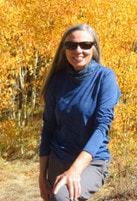 Marlene has been photographing Colorado's wildflowers while on her hiking and climbing adventures since 1979. Marlene has climbed Colorado's 54 14ers and the 126 USGS named peaks in Rocky. She is the author of Rocky Mountain Wildflowers 2nd Ed, The Best Front Range Wildflower Hikes, and Rocky Mountain Alpine Flowers. Purchase her books here story and photos by Jason Miller There is no shortage of wonderful hikes in Rocky Mountain National Park. This month's hike that I am featuring is one that almost anyone can conquer. It does not involve any climbing or bouldering but brings the essence of the Rockies from start to the finish. Today (in early April) is starting out to be a great day. It is around 50 degrees with a low blowing wind coming over the mountains. Sunglasses and coffee in hand, I drove past the Beaver Meadows Visitor Center and onto the entrance to the park. Once arriving at the Beaver Meadows entrance, I knew that I wouldn't see many people out here today. There is no one in line at the gate. I entered the Park and drove past the Beaver Mountain Loop Trailhead and up to Deer Mountain Junction. Across the street from the Deer Mountain Trailhead is a sign and a trail off into a vast meadow peppered with spruce and snow. Beaver Mountain Trailhead Starting down the trail I was quick to notice that there were not many footprints in the snow. People must rarely go on this trail. The walk involved a gentle downhill slope with no snow on most of it and some areas with snowpack. I chose to leave my micro spikes and snowshoes at home this time. I didn't need the micro spikes because the snow packed areas were slushy. This was due to the awesome weather that we have been having as of late. As I was going down the trail, there were signs of elk being here, birds chirping and once again, only a few footprints. I stopped to snap a picture and noticed that there is nothing out here but total silent nature: still, but full of life. Crazy, every time I come to the Park I see or feel something that is new to me. I am blessed to be one of the lucky few to call this place home. TOTAL SILENT NATURE! Just a little farther down I come to a fork in the trail. The sign gives me a little direction of where to go. Right or left. I chose right and went across some grassy spots and snow-covered Beaver Creek. Now there is no trail, no footprints, only snow over a huge meadow. I went for it and tried to continue. Heading toward a group Aspens I realized that snowshoes would have been a great idea. I made it to the trees and took a well- needed rest. Looking up, I see all sorts of evidence of woodpeckers: numerous holes in the large Aspen trees. This is a woodpecker condominium. There are multiple holes that have been created by these awesome, sometimes annoying birds. I tried t go a little farther up the meadow and it proved t be more than I wanted to deal with. I was sinking up to my knees in the snow, I turned around and headed back to the trees again. went onward to the sign that put me in this direction. OK, now let's go the other way. I walk about five minutes and came upon the same scenario. Snow with no path or footprints to be found. Sinking to the knees. NO THANK YOU! I really should have brought my snowshoes. I turned around again and headed back toward the parking lot. On the way back to the trailhead, I find myself picking up trash. There have been very few hikers on this trail leading to NO TRASH. Amazing. I stopped a couple more times for more photos. After making it back to the parking lot I checked my time. This only took 1.5 hours. I was planning a little longer but without snowshoes …no go! Having some extra time, I decided to pick up trash. Starting at the parking lot I was in and continuing to all designated areas around Deer Junction. It is incredible the amount of trash that is left behind. I left there and decided to clean up every pull-off area on my way out of the park. One by one, I drove to admiring the views that RMNP has to offer. At the pull-offs there are socks, masks, bottles, cigarettes, cans, and metal. All of us stop and take pictures at these spots but it is dirty. I challenge you. Yes, YOU! Do not leave Rocky the same as when you got here. Leave it better. Go out of your way to look for and pick up trash all along the way on your future hikes. Only you and I will lead the way to a cleaner and more natural park. This one picture shows just a sample of what is out there in our beautiful Park: hazardous to the animals and detrimental to the landscape. I have tagged this photo on social media to show what is out there and what we can do. #keepourparkclean  Jason Miller, 49, is a resident of Glen Haven and is married with two children. Before moving to the area, he used to work as broker for Nestle USA and H.P. Hood milk company. Today, he is the owner of The Rustic Acre (vacation rentals in Estes Park) and co-owner of Lightbrush Projections. by Cindy Elkins photos by Erik Stensland As a self-proclaimed hermit, the insightful photographer and naturalist Erik Stensland is the entrepreneur behind the Images of Rocky Mountain National Park Gallery in downtown Estes Park, Colorado. He is drawn by the natural world and has a deep passion for wilderness education and preservation. As an author, photographer and program developer, his unlikely path to RMNP was filled with adventure. In 1992 he married the love of his life, Joanna. Together, they set out on a path of service in the Balkan Peninsula of Europe which included living in Austria, Bulgaria, the most remote part of Albania and eventually, Kosovo. For more than ten years he partnered with churches and other organizations to “develop job creation programs.” His efforts to build opportunities for others included developing eco-tourism, a small air service into a remote area, selling local art , and dozens of other things. When the Kosovo war hit, they started a refugee agency and when the war finished, the Stenslands moved into Kosovo to help bring cohesion and communication between over a hundred smaller agencies that were working to help the area recover from the devastation.” During this turbulent time, the Stenslands witness gun violence almost daily; so much so that Erik carried a letter in his back pocket for his wife should he be killed. One can only imagine that burn out and exhaustion would ultimately lead him to ask God for change. In prayer, he specifically asked if it could be on a mountain, have a hiking trail nearby, and much needed solitude. Two days later, a friend asked if he knew of anyone who might want to take an extended break from Kosovo and move to Allenspark, Colorado to live in the basement of their cousin's soon to be built house. Erik said yes; shortly thereafter he and wife Joanna were headed stateside. Erik recognized that he had hit bottom, needed change and his prayers were answered with a new life opportunity. He began an online master's program in organizational development and the family grew to include a son. A few years later, the Stenslands returned to Albania only to find that he was no longer needed there. Returning to the Colorado Rockies they have called Estes Park area home for over 18 years. Once settled in, Erik knew he needed a job and would have to reinvent himself. He was open to what that might be. As an observant person and avid hiker, he noticed beautiful photographic images of nature and wondered, “How do I get paid to hike?” In a conversation with a local gallery owner and wife of a successful photographer, Erik shared that he was considering becoming a professional landscape photographer. Their response was the challenge he needed to spark his next adventure. He was told it was “impossible to make a living with just photography here.” That was all it took to launch his imagination into action. This year, Erik celebrates 17 years of photographing the amazing landscapes of RMNP and the American southwest. Currently Erik has two galleries, one in Estes Park and another in Abiquiu, New Mexico near Georgia O'Keeffe's former residence. Unfortunately, the East Troublesome Fire of October 2020 in Grand Lake, Colorado destroyed the home of those running his gallery space there resulting in them moving and the gallery closing. A new Grand Lake gallery may emerge in spring of 2023. With all of his work, Erik strives to educate photographers and outdoor enthusiasts in the ethics that are needed to truly preserve our wilderness. His foundation The Alliance for Responsible Nature Photography , (Nature First Photography) leads the way in helping others understand the importance of caring for wilderness and respecting the natural environment. “Leading by example and not pointing fingers.” Erik upholds strong values when hiking, or taking photographs. He lives up to and professes seven principles listed on the Nature First website as:
Integrity has three parts to the definition: knowing the difference between right and wrong; acting on doing what is right; and, being willing to speak up, even in the face of adversity, to educate others on what is right. Erik Stensland lives a life that nurtures integrity and helps others to know how to pursue an innate passion of being in the wilderness while standing shoulder-to- shoulder with integrity. He hopes that everyone who enters into RMNP will take the time to understand the fragility of this amazingly strong place. A park ranger friend of his said that Rocky Mountain National Park is experiencing “the urbanization of the wilderness”, referring to how many visitors come and go that do not know how to behave in the wilderness. Let's face it – there are many ways to visit Rocky: a quick drive across the Park including a jaunt around a lake or visitor center and exit through one side or the other; an extended-day visit with lunch somewhere; or, you can take a deep dive into Rocky. Erik wants everyone who visits to abide by a simple understanding of respect. Respect of impact and respect of realizing where you are includes recognizing how many others will come and go beyond your visit. He welcomes others and hopes they leave the land, animals, and beauty for all to enjoy. Take a risk and turn off your phone, your music, listen to the silence and find your inner creative self. Erik's own quest for silence and solitude takes him deep into the Park as he captures each hike on maps. Every adventure, often beginning way before sunrise, each cliff and breathtaking waterfall are captured and categorized in his records so he can continue to find places that he has not been before. Erik strives to climb a new horizon with each mountainous adventure in Rocky Mountain National Park. Rocky has an allure for him; Erik said he suffers from a self-proclaimed “illness when it comes to what's said to be impossible”. He overcame the challenge of “that's impossible” to create his dream job of being paid to hike. His passion to educate others in what is needed to preserve our wilderness areas leads him to write and develop opportunities for others to explore our favorite national park. Erik hopes that his photography will be seen in a way that allows the viewer to “step back and look with fresh eyes, recognizing that nature is a gift.” When asked what some of his favorite areas or subjects within RMNP to photograph are and why? Erik responded with, “I can get as excited as a child at Christmas if I'm at a calm mountain lake with dramatic lighting illuminating jagged peaks surrounded by low clouds. Yet, I can also get very excited to find a simple scene in a forest such as aspen leaves that have fallen into an artistic pattern on a lichen covered rock. In the silence there is an opportunity to slow down, to pay attention, to forget all the other responsibilities and expectations of life. For me that opens the door to really begin to see the wonder of the natural world both big and small.” Currently, Erik is the author of seven books, has a successful online educational program and strives to work with local organizations to assist every visitor to RMNP understand where they are visiting. Erik says: “I hope that this generation and future generations will see the value of wilderness for its own sake. As humans we have this tendency to judge everything by what it does for us, the value it can give to us. That may be viewing a forest for the lumber it can provide, the minerals, water, food, or other that it may contain. Yet we as nature lovers can also do the same and see that same forest only for the recreational opportunities, views, and restoration it can provide us. I would hope that we would all come to view the natural world as having a right to exist apart from ourselves and what we get out of it. I would love it if my photographs could help us recognize its intrinsic value apart from us.” Stop by the Images of Rocky Mountain National Park Gallery; maybe he will tell you about a mountain lion encounter, hikers unknowingly sitting on a frozen elk, or about his adventures into the depths of the Park at night. Listen with both your eyes and ears as he shares photographs, reminds you to walk in the middle of the trail and educates you as to why. editor's note: this story is pulled out in its entirety from the February/March edition of HIKE ROCKY digital magazine. For more information about the magazine visit this page by Murray Selleck, HIKE ROCKY'S equipment specialist HIKE ROCKY's gear reviews are unsolicited. With apologies to Paul Simon, when spring-like weather hits the Rocky Mountains, we are all just “slip-sliding away.” When winter snowfall transitions from fluffy powder to rock hard ice, each step can become treacherous. Freeze-thaw cycles, wind driven spindrift, even solar radiation on cloudy days create the perfect conditions for ice that can send us flying off our feet. Have you tried hiking up an icy trail without weighting your feet? The analogy of walking on egg shells is appropriate, as well. If we’re not careful with every step, ice will send us airborne. This wouldn’t be so bad except for the inevitable landing. This is where traction devices that you attach to your winter footwear come into play and save the day. Snowshoes, crampons, spikes, cleats, studs, coils… The choices for traction on your boots are many. Where do you begin? How do you choose? With every piece of equipment or clothing that you choose always begin with your intended use. Will you be using your traction device to negotiate icy sidewalks in town? Are you a runner maintaining your winter fitness running on trails or roads? Or will you be hiking towards the high alpine peaks of RMNP crossing frozen lakes and negotiating your way through iced over boulder fields? These three different scenarios show very different traction needs and wants. Knowing your intended use before you buy will help you make your decision. There are four basic traction designs. The one feature that holds true with each of the traction device models shown here is a flexible rubber frame or rand that stretches over your shoe’s toe box and around the heel with enough tension to hold it in place. Beyond this one shared feature, the traction offered is where the decision making begins. Wire Coils One of the more popular traction devices for walking and town use are the Yaktrax Walk ($19.95) or Yaktrax Pro models (29.95). These use a sturdy wire coil connected to its rubber frame. The wire coil offers low profile traction that allows for a natural walking gait. You won’t necessarily have to adjust your normal walking style or lift your foot any higher to clear the coil from the ground. This is definitely a consideration with traction devices that offer more aggressive or longer (taller) spikes The Yaktrax Walk is the most basic model. The Yaktrax Pro has an additional strap that fits over the top of your instep for additional retention and security. Yaktrax designs both models for walking or running. Tip: If you’re between sizes on any traction device try to go with the smaller size for better retention on your boots or shoes. Fitting them smaller does offer better retention but it may be a struggle to pull them on. If you use a larger size you risk a loose fit and the traction device might come off in the most inopportune time. Studs Kahtoola makes a model named EXO Spikes ($59.95) and while Kahtoola calls them spikes I think of them more along the lines of studs you might see on a studded car tire. The small, low profile tungsten carbide studs dig into ice and hard packed snow nicely. The wrap around rubber frame comes up and over the top of your footwear’s toe box and further up towards your instep to keep the traction device in place. More retention is nice. I like the low profile studs and they are built for action. With running shoes and or softer sole shoes you won’t feel any of the studs underneath your shoes with each weighted stride. This lets you think about the terrain you’re running on versus feeling any unnatural ridges or pressure points from spikes with each step. Of course, you’ll need to consider the depth of the studs and the amount of traction you require. On steeper terrain, they may not be enough but on modest hills while running or walking fast they are more than suitable. Tip: Using trekking poles or ski poles along with your traction device while running will help with stability and traction. Poles help propel you up hills faster and provide another point of stable contact while descending. Diamond-shaped rotating beads Ice Trekkers Diamond Grip ($49.95) and Yaktrax Diamond Grip ($49.95) are very similar to each other. Both use unique “diamond” shaped beads. The big difference here is the number of potential contact points and the fact that the diamond beads rotate on a small steel cable. (Of course they are not made of diamonds but their marketing guys worked late into the night on that name). The design of the beads are multifaceted like a diamond increasing the number of contact points with ice. Each time you put these on your winter footwear the position of the diamond studs changes. You aren’t using the same contact points time after time so longevity and durability are increased. Traction devices that use a fixed point of contact may dull out sooner than these that rotate. When weighted, the rotating diamond grips grab and hold ice securely. Tip: After use, it is best to air dry your traction device. Don’t pack them away into a stuff sack or some place where they can’t dry completely. Rust is generally not a problem out west but it does occur. Keeping your traction devices rust-free will help them last longer. Spikes Kathoola Micro Spikes ($69.95) and the Snowline Chanson Pro ($64.95) offer the most aggressive traction. The spikes will remind you of crampons used for glacier travel, or perhaps to some extent, even vertical ice climbing crampons minus the front points. The spike length is the most aggressive at 3/8 inch long or 1 centimeter. This doesn’t sound significant but when compared to all the others mentioned so far it is. These are perfect for more adventurous terrain with steeper ups and downs with significant ice conditions. You may have to think about how you walk to clear the length of the spikes as your foot strides forward. There is some getting used to them the first time you use them. If you drag your feet the spikes could catch giving you that feeling of stubbing your toe against a rock or root on a summertime hike. You don’t want your traction device to be the cause of a fall… talk about irony, defined! Another cautionary note is being aware that in certain snow conditions snow or ice can accumulate under your foot. This can also happen with snowshoe crampons and metal edges of cross country skis. When the snow has become wet the metal traction device, snowshoe crampon, or metal edges of your skis has remained cold and a clump of snow can either ball up or ice can form on this metal reducing your traction. The easy fix is to tap your foot, snowshoe, or ski with a pole and break the packed mess free (you do risk breaking your pole if you whack too hard). Or, preventing this icy buildup in the first place can be done with spray- on glide wax made for xc skis. Spray the wax on and let it completely dry before you use them. Another small issue that can happen over time is the spikes will become dull with use. A traction device with dull spikes won’t dig in as easily. The good news is you’re using your spikes often. That means you’re getting out. Well done! To help prolong the life of your spikes take a file to them once in awhile. A little maintenance with a file to keep the spike points sharper is smart. Ice climbers do this often to their ice axes and crampons. Why can’t you with your traction device? Tip: With all traction devices centering them on the soles of your footwear is important. You can reduce the chances of breakage or premature wear and tear with a correct fit and centering them correctly on your boots or shoes. Rocky Mountain Day Hikes/HIKE ROCKY magazine contributors’ preferences We did an informal pole with our RMDH fellow contributors to see which brand and style of traction devices they use. Here are their preferences: Marlene Borneman: Kahtoola Microspikes; Dave Rusk & Barb Boyer Buck: Snowline Chainsen Pro; Rebecca Detterline: Yaktrax “Ice Trekkers;” and, Chris Reveley, uses two brands: XTR Extreme Outdoor Traction and a traction device from Hillsound. The takeaway from this? Personal preferences always rule the day. One person’s day of confidence is another person’s day filled with “slippin’ and a sliding!” 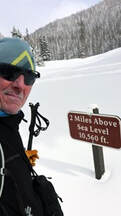 Murray Selleck moved to Colorado in 1978. In the early 80’s he split his time working winters in a ski shop in Steamboat Springs and his summers guiding on the Arkansas River. His career in the specialty outdoor industry has continued for over 30 years. Needless to say, he has witnessed decades of change in outdoor equipment and clothing. Steamboat Springs continues to be home. editor's note: this story is pulled out in its entirety from the February/March edition of HIKE ROCKY digital magazine. For more information about the magazine visit this page by Barb Boyer Buck It's an emergency, calling for emergency measures. The exploding visitation numbers at Rocky Mountain National Park combined with a budget that has stayed flat for a decade has put Rocky's management officials in a defensive position. Something must be done to keep Rocky from being loved to death. “I'd like to say our staffing levels have kept up with the increase in visitation, but it has not,” said Kyle Patterson during a question-and- answer period after a public presentation held on May 25, 2021. This meeting was part of public outreach about long-range visitation strategies in Rocky. “Our base budget that we get from Congress has seen a very flat situation over the past 10 years,” said Rocky's superintendent Darla Sidles at that same meeting. “This flat is essentially an erosion of our budget,” about 14% over that time. Staffing has decreased by 16% as well, while visitation has increased by more than 40% since 2012. Visitation management measures have been in place since 2016 – everything from limiting traffic along the Bear Lake corridor to increased shuttles have been tried to help with the congestion, traffic, inability to find parking, and more. But it wasn't enough; in 2019, the Park's visitation numbers of 4.6 million made it the third most-visited national park in the nation. The following year was a tough one for everyone, but especially for Rocky. The Park was closed for two months between March-May, 2020 due to COVID19, and devastating fires burned more than 30,000 acres (the most in any fire season in the Park's history) from August-October, with dynamic closures of much of the most popular areas of Rocky It was also the first year of timed-entry reservations, a measure that has received a considerable amount of blow-back from the public, especially from those who live near Rocky and along the Front Range. But still, visitation numbers for the year dropped by only 29%, or to 3.3 million visitors. In fact, record-setting visitation occurred in November and December of that year, after most of the Park reopened post-fires and the timed-entry reservation system expired for the season. In 2021, the timed-entry reservation system was modified to address the inadequacies of the previous year's program. Reservations were now required from 5 a.m. to 6 p.m. in the most popular area of Rocky: the Bear Lake Corridor, which includes Bear Lake, Glacier Gorge, Spruce Lake, and Moraine Park and the rest of the Park had reservations-only in place between 9 a.m. – 3 p.m. Even so, visitation for 2021 jumped back up to 4.4 million. The reservation system for 2022 will look a lot like last year's, but it's still considered a pilot program; tweaks were made to address some of the shortfalls of the system that ran in 2021. Reservations will be required from May 27 – October 10, 20, with the first reservations taken on May 2 for May & June dates. “Initially, 25 to 30 percent of permits will be held and available for purchase the day prior at 5 p.m. through recreation.gov. These are expected to sell out quickly and visitors are encouraged to plan ahead when possible,” states Rocky's website. So, those are the nuts and bolts. Not enough funding to improve infrastructure and keep staffing levels where they need to be to properly manage visitation is why we are facing another year of timed-entry reservations. For those of us who live near Rocky and have traditionally been able to pop into the Park when the whim hits us, this can be a hard pill to swallow. The presentation I referred to above fielded questions and collected comments as part of this process; the name- redacted comments are available to read here. They run the gamut from criticizing a lack of privilege for local and Front Range residents to pleas for conserving Rocky's natural wilderness & implementing even more strategies. Some accuse the NPS of a money-making scheme; some say that low-income people will be deterred from visiting. As stated by its Organic Act in 1916, National Park Service's mission is “ to conserve the scenery and the natural and historic objects and the wildlife therein and to provide for the enjoyment of the same in such manner and by such means as will leave them unimpaired for the enjoyment of future generations." Rocky became a National Park in 1915, but perhaps even more significantly, 95% of its land became designated wilderness in 1974, under the Wilderness Act. Designated wilderness by law meant "...in contrast with those areas where man and his own works dominate the landscape, (wilderness) is hereby recognized as an area where the earth and its community of life are untrammeled by man, where man himself is a visitor who does not remain." Why has visitation increased so dramatically at Rocky? The increase in visitation, especially over the past few years, has a direct correlation to several factors. When the pandemic closed off much of the other recreational opportunities available to society, the great outdoors became very popular. This trend pushed those who may have never really visited the outdoors to try it out, which can bring its own problems. Rocky is not at all a “park” like those in urban or suburban areas. Most of it is true wilderness, remote with challenging terrain for even the most experienced outdoorsperson. For example, Rocky has spent an inordinate amount of time pulling vehicles out of ditches this season because the drivers were unfamiliar with driving in winter conditions, or their vehicles were not suitable for the conditions. If the state's traction law is active for Rocky, all vehicles “must have properly rated tires (Mud and Snow, Mountain and Snow or All-Weather Tires) with a minimum of 3/16" tread,” reads Rocky's website on the subject. “If you have improperly rated tires on your vehicle, then you must use an approved traction control device. These may include snow chains, cables, tire/snow socks, or studded tires. When the traction law is in place in RMNP, if a vehicle is involved in a motor vehicle crash, to include sliding off the road due to icy conditions, motorists will be cited if their vehicle does not meet Colorado Traction Control Law requirements.” While overall population growth has stagnated in the US, Colorado's growth has exploded in the past 10 years, gaining nearly 800,000 new residents, leading to another state representative going to Congress. Most of this growth occurred along Colorado's Front Range and Rocky's statistics show that 30-40% of the Park's visitors are from the Front Range. Rocky Mountain National Park's Day Use Strategy Currently, Rocky is working on a long-term day use visitation strategy after its pre-NEPA (National Environmental Policy Act) planning effort and outreach. Additional public comment will be solicited in early 2023 when the formal NEPA process is underway, but the bottom line is that visitor management strategies are here to stay. The pilot programs that have been in place since 2020 will evolve into a permanent strategy based on the results of the NEPA study and other day-use strategies already implemented. Just how restrictive these may be is dependent on funding, staffing, and visitor behavior. The planning process' purpose has many priorities, based on Rocky's mission as a Wilderness Area and a National Park. These include the proper management of the Park's natural and cultural resources, staff and visitor safety, visitor experience, and Rocky's operational capacity. Resource Impacts Social trails, widening of existing trails by visitors, off- trail wandering, and native plant trampling has caused damage to sensitive environments. So has roadside parking, idling, “elk jams” (traffic jams when a wild animal is seen). Vandalism and the illegal collection of artifact damages the cultural sites within Rocky and is “of particular concern to tribal interests.” Human waste has been found in increasing concentrations, affecting water quality and visitor experience. Visitor Experience High traffic congestion at the most popular destinations and roadways has led to frustration among visitors due to the inability to find parking. John Hannon, the Park's visitor use management specialist, reported escalating conflict, including fist fights among visitors and staff, during these times. This congestion has led to the elimination of some popular ranger-led interpretive programs and has impaired emergency response and maintenance of facilities. Even volunteer rangers, desperately needed to help with staffing issues, can't find parking in the places they are needed most. Staff and Visitor Safety Along with physical altercations between frustrated visitors and staff, other safety concerns include visitors illegally starting campfires, approaching, or feeding wildlife, and/or bringing dogs (which are predators to many species) on Rocky's trails. All of these can cause emergency situations that can result in severe injury or death.  Long lines at restrooms prevent staff from properly maintaining these facilities. RMNP photo Long lines at restrooms prevent staff from properly maintaining these facilities. RMNP photo Park Operations and Facilities Higher visitation results in excessive wear and tear on facilities causing the need to triage repairs and focus on the most heavily used areas of the park causing other areas of the park to degrade further. Long lines to get to job sites for facilities, law enforcement, and interpretation staff hampers the park's abilities to provide critical services like maintaining restrooms, responding to emergencies, providing in person program and outreach. Higher water use and wastewater generation than systems can support causes increased frequency and costs of sewage pumping at park-wide vault toilets. Proposed Visitor Use Zones and the desired outcomes of visitor-use strategies In this pre-NEPA process, Rocky Mountain National Park identified three visitor-use zones, each of which are likely to have different visitor-use strategies. Zone One is comprised of 100% wilderness and considered low-use, low-encounter. This area is indicated in green on the map. In this zone is where the natural landscapes are emphasized to their greatest extent. These areas are minimally maintained and provide the best opportunities for solitude and self- reliance. The desired outcome for visitor use strategies in this zone is to keep wilderness conditions pristine, that plant and animal life will thrive with high water quality and minimal human influence and social trails become non-existent. Zone Two provides easy to moderate access to wilderness through Rocky's trail system. These areas are indicated in yellow on the map. and include well- maintained trails closer to restroom facilities, but still provide opportunities to experience the wilderness in relative quiet. The desired outcome in these areas is to keep wilderness recreation plentiful with sustainable trail maintenance and moderately available, well- maintained restroom facilities while retaining the natural integrity of ecosystems, wildlife habitats, and migration behaviors. Indicated in orange on the map is Zone Three, where the most human impact occurs. Envisioned for this zone is that surfaces are hardened or paved to reduce impact on the natural environment and visitors have the most access to information to help them recreate in Rocky and travel with ease to their preferred destinations via private vehicle or alternative transportation. Interpretive and educational programs provide opportunities for visitors to increase understanding and appreciation for park landscapes and resources. The pace of visitation is at a level where park staff can interact with visitors to ensure that visitors are informed, prepared, and use best safety practices. With proper management in this zone, established trails do not exceed design specifications, and visitor- created trails and trail widening are minimal to nonexistent. Visitors experience clean and accessible public facilities, and park staff can access facilities and work areas in a timely manner due to less roadway congestion. Right now, Rocky is still collecting data – the indicators, thresholds, and capacity of the various routes and destinations within its boundaries. In early 2023, the NEPA process will begin, which will give people another opportunity to voice their concerns and make suggestions. Preliminary long-term strategies that are being considered could include a combination of:
“It's not the Rocky Mountain National Park of the 1970s or even the 90s, unfortunately,” Superintendent Sidle said. “We've been trying some different things over the past six years for how to manage this increase in visitation”, and the timed-entry reservation pilot programs have been a stopgap measure to try to spread out visitation throughout the day. Increased visitation is a nationwide problem; visitor-use strategies are being implemented in several national parks across the nation this year including Acadia, Arches, Haleakala, Glacier, Rocky, Shenandoah, and Zion. “Rocky Mountain is a national park,” said Patterson. “And while so many of us are fortunate to live on its doorstep or moved here because of the Park, we cannot provide special access to locals.”  Barb Boyer Buck is the managing editor of HIKE ROCKY magazine. She is a professional journalist, photographer, editor and playwright. In 2014 and 2015, she wrote and directed two original plays about Estes Park and Rocky Mountain National Park, to honor the Park’s 100th anniversary. Barb lives in Estes Park with her cat, Percy. editor's note: this story is pulled out in its entirety from the February/March edition of HIKE ROCKY digital magazine. For more information about the magazine visit this page story, photos, and video by Murray Selleck, HIKE ROCKY’S equipment specialist It may be the cadence of cross country skiing that I love so much. The rhythmic kick and glide of cross country skiing is addicting, whether gliding through an open meadow or working hard breaking a deep, snowy trail up a mountainside. Perhaps it is the ability to explore the winter backcountry under my own power on skis that makes each time I go feel like a new adventure. It makes no difference whether it's a bluebird day with sunshine creating shimmering rainbows off the snowpack or I’m under heavy snow-laden clouds, smothering the mountaintops with temperature-dropping winds whipping through the trees... being out on a winter day on cross country skis is always exhilarating and wonderful. Wonderful that is, if the skis you have chosen match up to your expectations. There are a few basic concepts while choosing a cross country (xc) ski for yourself that you should be aware of; these will make your xc ski decision easier. With the right ski you will want to go time and time again. If your ski isn't at its optimum, your ski day may be challenging and reduce your enjoyment. Here's what to think about to make each xc ski day wonderful! How to choose ski length The length of your cross country ski is primarily based on your weight. XC skis have no clue how tall we are but they sure do know how much we weigh. The ski needs to be soft enough for you to effectively set the “fish scale” pattern into the snow to stabilize your kick. And the ski also has to be stout enough to carry your body weight for glide. Too much one way or the other and you're either slipping because the ski is too stiff or you're not gliding at all because it is too soft. Every cross country ski manufacturer will publish a weight range for each model and length of ski they produce. These weight ranges are excellent suggestions, but not rules written in stone. Many times, a person will find themselves in the middle of two weight ranges with the option of a shorter or longer ski length. Choosing one ski length over the other depends on your history as a cross country skier, your athleticism, and your enthusiasm for xc skiing. The shorter ski will allow you to set your kick easier and the ski will be easier to maneuver, especially skiing downhill. The one drawback is that a shorter ski may not glide as far with each kick that you set. The longer ski will definitely have more glide but you will have to be more proficient with your xc skills. If you don't transfer your body weight 100% from one ski to the other to set your kick you'll slip. The skis will immediately remind you to pay attention to your technique! Another consideration with a longer ski length is the maneuverability. It may require a bit more energy to bring the skis around in a turn... or not, depending on your skiing ability. Cross country skiers who have been at this for quite some time generally prefer a longer ski. Beginners or folks who are a bit timid on their skis likely will choose the shorter ski length. This last comment is a pretty broad generalization but it does hold some historical consistency. Ski width considerations When you start shopping for a backcountry/cross country ski you will notice a big range of ski widths and profiles. From very skinny skis measuring about 44mm in width underfoot, meant for a groomed track at a touring center, to very wide alpine-looking backcountry skis coming in at over 112mm at the tip there are lots and lots of choices. When considering backcountry xc skis with metal edges, the narrower the ski the more mileage and touring oriented it is. That is to say a backcountry skier with a narrower BC ski will tend to favor milder terrain and coming to a hill they might prefer to ski around it rather than up and down it. As the skis gain width they also gain sidecut, giving the skis more downhill control and turnability. Skiers choosing the widest profile skis probably have a slope in mind to make some turns along their way. Making some turns is a high priority. Of course, there is always a middle ground: skis that are not too narrow and not too wide. The middle width profile of ski adds stability with its width and offers a modicum of downhill control and turnability. This skier is happy to go for a long tour and if they make some long wide sweeping GS turns or two along the way, fine, and if they don't, that's fine too. The trick in choosing a width ski for yourself is imagining yourself on skis in the backcountry. Will you be touring through meadows? Exploring new terrain? Making turns in deep powder? A little bit of all of it? Let those thoughts of you skiing be your guide. Ski width and boot power When considering xc boots to go with your skis, you want to match ski width with boot power. More than likely, a narrower ski will be matched with a “light touring boot.” You won’t be asking as much from the ski while you're on your tour. Kicking and gliding may be the extent of your day. As skis get wider you'll need a ski boot that has increased power to control and direct the ski in more adventurous terrain. These boots often have an external ankle support combined with a stiffer flexing sole. The combination is a go-anywhere-do- anything package. Be aware that there are two NNN boot binding systems. One is a “light touring” NNN system and the other is NNN BC (backcountry). The two systems are not compatible with each other despite having the common NNN reference. A light touring NNN system has a narrower and thinner toe bar that slots into the binding while the NNN BC bar is longer in width and beefier in thickness. “Old school” three pin boots and bindings are still an excellent choice for your backcountry set up especially when you are looking to increase your downhill turning capability. Scale patterns for kick One of your last considerations in choosing a ski is the kick pattern or “no wax” pattern on the base of the ski. Fischer Nordic names their pattern “Offtrack Crown.” Rossignol offers “Positrack” and Madshus gives us “Omnitrack.” Other manufacturers offer their versions of a traditional fish scale pattern. While they all work as advertised and offer similar features (a deeper and tighter pattern under foot and the pattern lengthens and becomes more shallow towards the tip and tail), they can ski a little differently from one another. The easiest way to judge what the pattern will do for you is to feel the pattern. Brush your fingertips against the grain of the scaled pattern, especially through the middle of the pattern where your boot will be centered on top of the ski. You can feel the depth of the pattern and each one is cut either a bit deeper or shallower from one another. A deeper pattern under foot will offer a very positive kick whether or not you properly transfer your body weight. You can be distracted by the clouds or bird song and still ski along, setting your kick pretty reliably. The drawback with a deeper cut pattern is it does increase the inherent drag on glide all no wax patterns create. The ski will not glide as far with the effort of your kick. A ski with a shallower no wax pattern under foot will reliably kick with proper weight transfer and the pattern does enhance the glide effect by reducing drag. Choose the pattern that best fits your current skill level or think ahead to the skier you want to become. By the way, “no wax” patterns on your skis do require wax! At a minimum use a liquid surface wax; this is easily applied over the length of your ski right through the pattern. This will help your ski glide and prevent any icing that can occur on the scales in certain snow conditions. The joys of XC skiing The subtle sound of your skis swish-swishing over snow as you tour. Gliding forward, effortlessly. Exploring a silent winter day. Covering considerable distance under your own power. Laughter with friends. These are the joys of cross country skiing. Skiing on a brisk winter day and enjoying the wonderful scenery and mountainous terrain of RMNP should never be taken for granted and experienced as often as possible. Grab your cross country skis, plan to meet some friends, and get out and ski ... often! 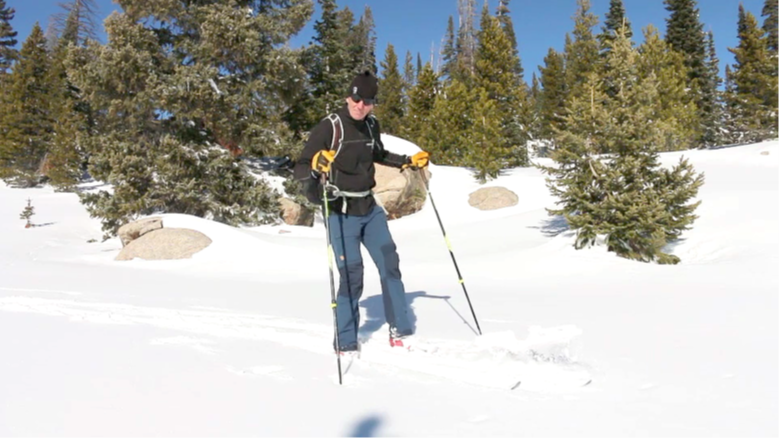 Murray Selleck moved to Colorado in 1978. In the early 80’s he split his time working winters in a ski shop in Steamboat Springs and his summers guiding on the Arkansas River. His career in the specialty outdoor industry has continued for over 30 years. Needless to say, he has witnessed decades of change in outdoor equipment and clothing. Steamboat Springs continues to be home editor's note: this story is pulled out in its entirety from the February/March edition of HIKE ROCKY digital magazine. For more information about the magazine visit this page by Dave Rusk I had been crunching snow for a good thirty minutes. There were others on the trail before me, but the trail was not very packed down. I passed a few people returning from their journey who expected the trail would be easier to walk on, wishing they had snowshoes. We stopped to visit for a bit, then I crunched on, through the aspens and pines. I looked over the overlook to Glacier Creek, and then pressed on to Alberta Falls, now entirely snowed under. There I pause briefly. It is mid-afternoon and the sun is casting rays through perfectly blue skies. The temperature is comfortable and cool. No one has ventured down into the creek through the fresh snow to snap pictures of the hidden falls so I took a pass at that, too. I stepped back on the path and continued my meander through the frozen Loch Vale to the Loch, with the sound of cold snow crunching under my snowshoes. I rounded a few bends into a clearing and then paused again, turning toward the vista to the north of the distant Mummy Range. I noticed the silence around me. It isn't a deathly silence but a silence of stillness. Something about the snow makes the quiet more silent than in the summer. It is as if the snow has absorbed all sound. But the most notable sound that is missing is the wind, moving through the pines, sometimes as a drifting breeze moving caressingly between the needles, but more often as a raging roar crashing down from the Divide. But on this day I notice that it is so calm nothing dare moves, not even a flit from a mountain chickadee or a dark-eyed junco. Everything is taking a pause in the stillness, nothing wants to disturb it. I gazed silently at the long winter blue shadows casting patterns on the white canvas snowscape, imagining that even those in the subnivean zone are pausing and taking in the quiet sound of the stillness. I turned and began to crunch my way around the glacier knobs. In this zone, mice and voles and shrews make their winter home with tunnels and pockets and rooms that are connected to the world above by narrow shafts breaking to the surface. Tiny little tiny paw prints radiate visibly across the snowscape from little round entrance holes. The subnivean zone is their cozy winter protection from the harsh and brutal winter of the above world. As the first snows of winter begin to fall, pockets of air are created by overhanging rocks and sturdy plants drooping over. These create a network of canopies while furry little critter balls huddle up and let the snow surround them. In these early snows, the ground in some places radiates enough warmth, in a process called sublimation, that it melts the snow into a gap of water vapor which then freezes to form an icy, crystal roof. No doubt, the warm bodies of these small inhabitants, scurrying through their tiny tunnels under the snowpack, quickly melts and freezes the ceiling and walls of their protective tunnels each time they go from room to room. No matter how cold and harsh the outside world becomes, life in the subnivean zone maintains a steady 0-degree celsius temperature, sufficient for winter survival, if not occasional comfort in a nest of dried grass and downy feathers. It would be understandable if these furry little creatures, scurrying about from nest to food storage to tea room, might become complacent, when out of nowhere the nose and teeth, or griping claws of a predator, suddenly come crashing through their crystalized roofs, bringing with them the cruel, harsh reality of the world above. The ermine, pretending to be so cute in its snowy white fur coat, flicking its black tip tail back and forth, quickly slithers down an open-air shaft, with hungry teeth gnashing for a meal. No doubt cautious mice and voles freeze in their cute little tracks if they hear anything overhead, doing whatever they can to survive until spring. With a fair amount of effort, I climbed my way out of the winter trail that follows up Icy Brook, topping out at the Loch. There, in a rare day of no wind, I gazed up to Andrews Glacier, basking in late-day sun, and then glanced left around the Taylor Peak massif to Taylor Glacier, which has spent its day in the cold shadows of Powell Peak. I admired the contours of the wind- sculptured snow around the edge of the frozen lake shore and take note of the last winter sun about to drop behind Taylor Glacier, knowing that when it does drop behind the ridgeline, so will the temperature. I take a break on the rocks on the eastern shore of The Loch to appreciate the calm of the day. Then I headed back down the narrow open shaft of my life and back into my own little protective subnivean zone. References: https://www.nps.gov/romo/learn/education/upload/Winter-Ecology-Teacher-Guide-for-web.pdf tetonscience.org walkingmountains.org 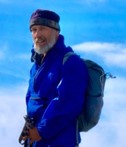 Dave Rusk has been sauntering and taking photographs through Rocky Mountain National Park for decades. He is the author publisher of Rocky Mountain Day Hikes, a book of 24 hikes in Rocky, and the website of the same name. He is the publisher of HIKE ROCKY Magazine and an important content contributor to all of these endeavors. |
Categories
All
|
© Copyright 2025 Barefoot Publications, All Rights Reserved

